You hear tapping from the walls

Termites will make themselves known, usually by accident, by banging their heads against your walls, emitting a tapping sound. Don’t entertain this as cute, termite sounds are a pest emergency. Alert pest control experts immediately, as termites may be operating in huge colonies within your home. The more is very much not the merrier in this case.
You wake up with bites
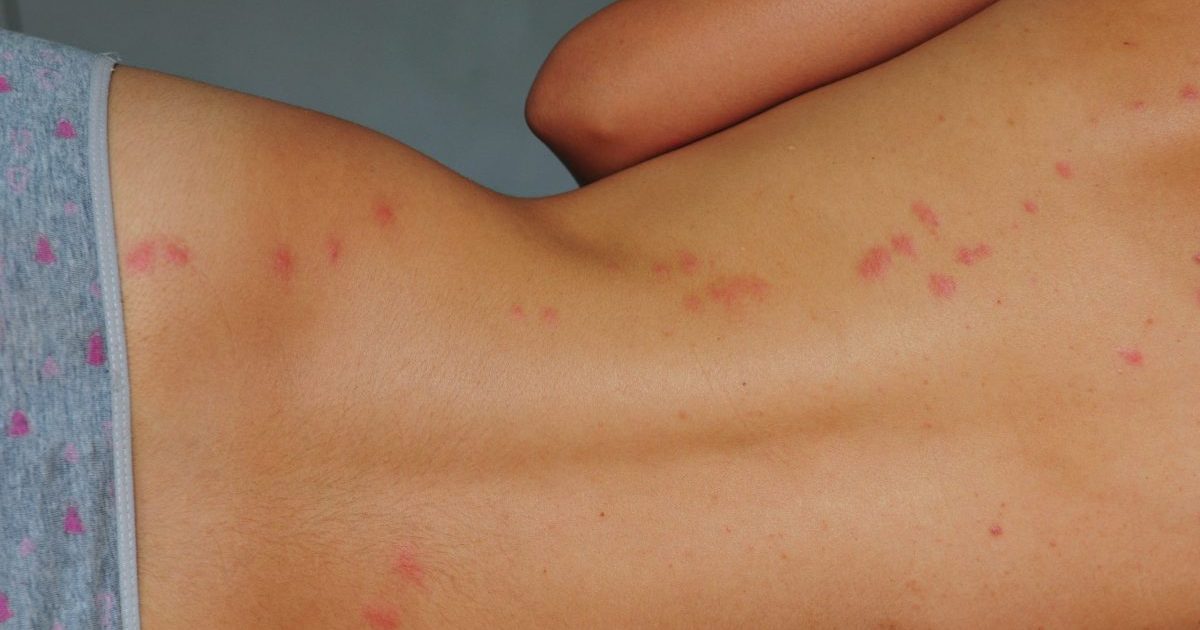
Getting bug bites during the summer while outdoors is, while annoying, fairly normal. But if you begin to notice bug bites emerging first thing in the morning, it may be a sign that you’ve got an infestation of bugs somewhere in the house. Double-check your bed and surrounding area. If you find bed bugs, call a pest company to take care of them.
You find dead bugs
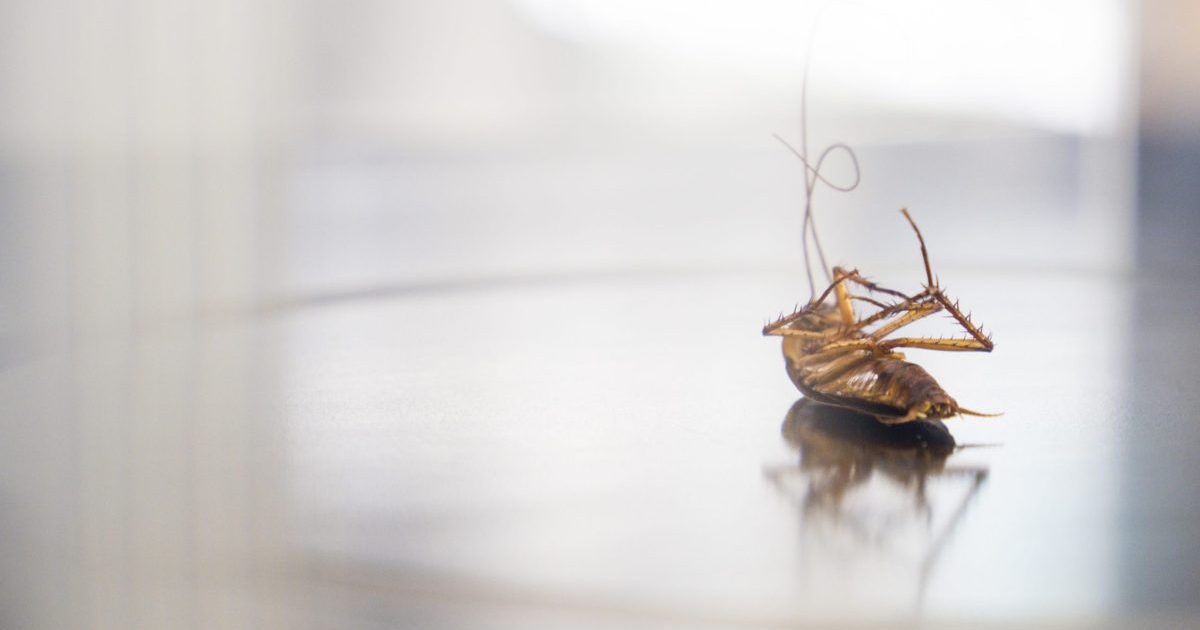
This sounds like an obvious tell-tale sign. But some may be tempted to think a dead bug is a good bug, and a sign that an infestation is over. This is not true. It just further confirms that there are bugs in your home, and you need to solve the issue before it gets out of control. Take note of whether the dead bugs are all the same type of pest. If so, you could have a colony on your hands.
You find droppings
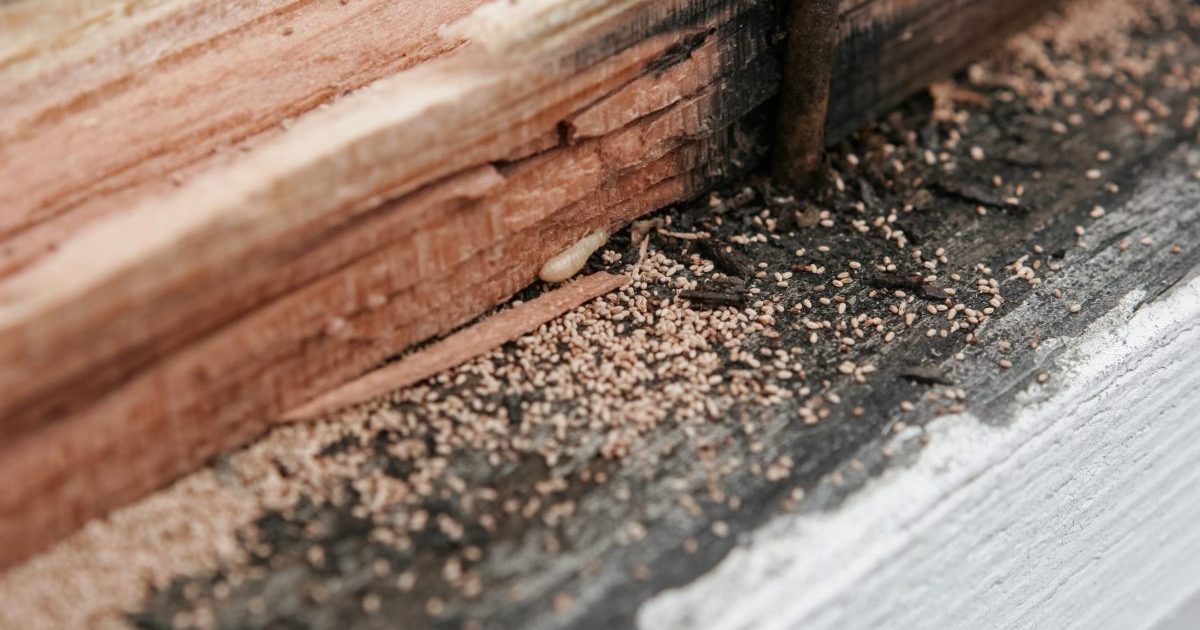
The thought of having piles of insect droppings in various areas of your house is enough to make your skin crawl, but you’d be well advised to keep an eye out, even if yo aren’t anticipating an infestation. Even little old bugs and insects leave behind noticeable droppings if you look close enough. Then there are the bigger ones, such as termites, who leave behind tiny brown pellets, similar in size to uncooked rice.
The house begins to stink

Different pests give off different odours, but they all have one thing in common: being bad. Infestation is not a good smell, whatever the pest. Bed bugs have a sickly sweet odour, while cockroaches have an oily odour. God forbid your infestation of bugs turns into an infestation of mice or rats. Then you’ll really know about it. Rodents leave behind a musty, urine smell.
You see a lot of spiders
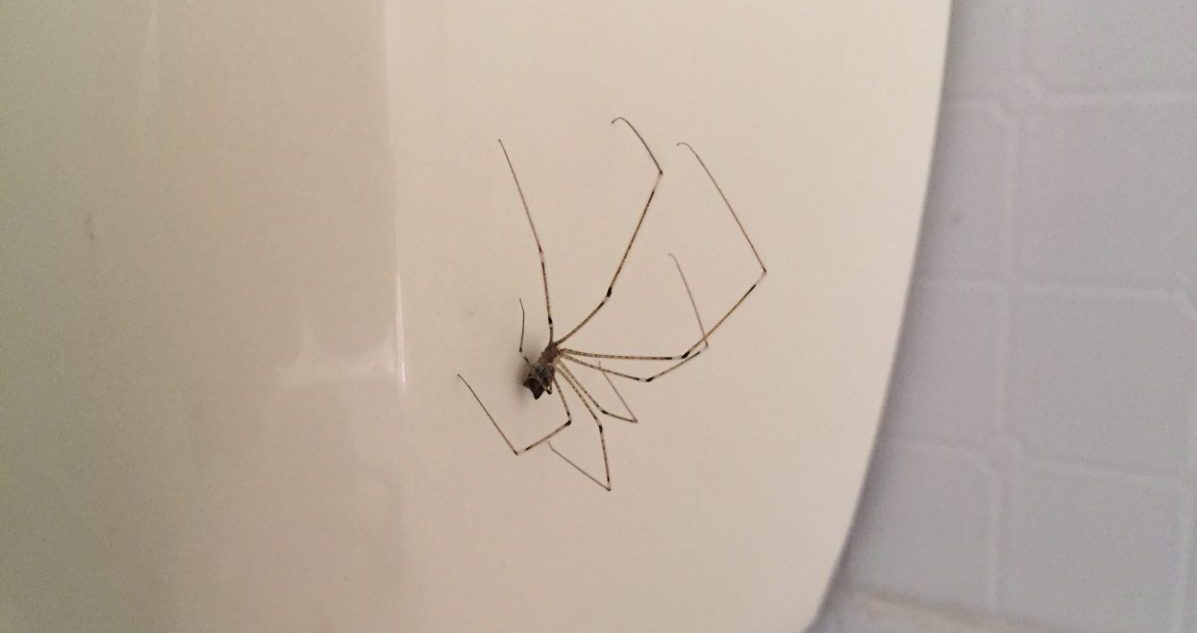
Seeing spiders in your home is never fun, regardless of whether you’re phobic or not. But you’ve probably never thought about why spiders are in your home and not outdoors within their own element. It’s because a spider’s main diet is made up of insects. If there are plenty of bugs in your house, a spider will follow. If you don’t see any bugs appear, don’t think the issue is resolved. It just means spiders are controlling the population.
…and lots of ladybugs
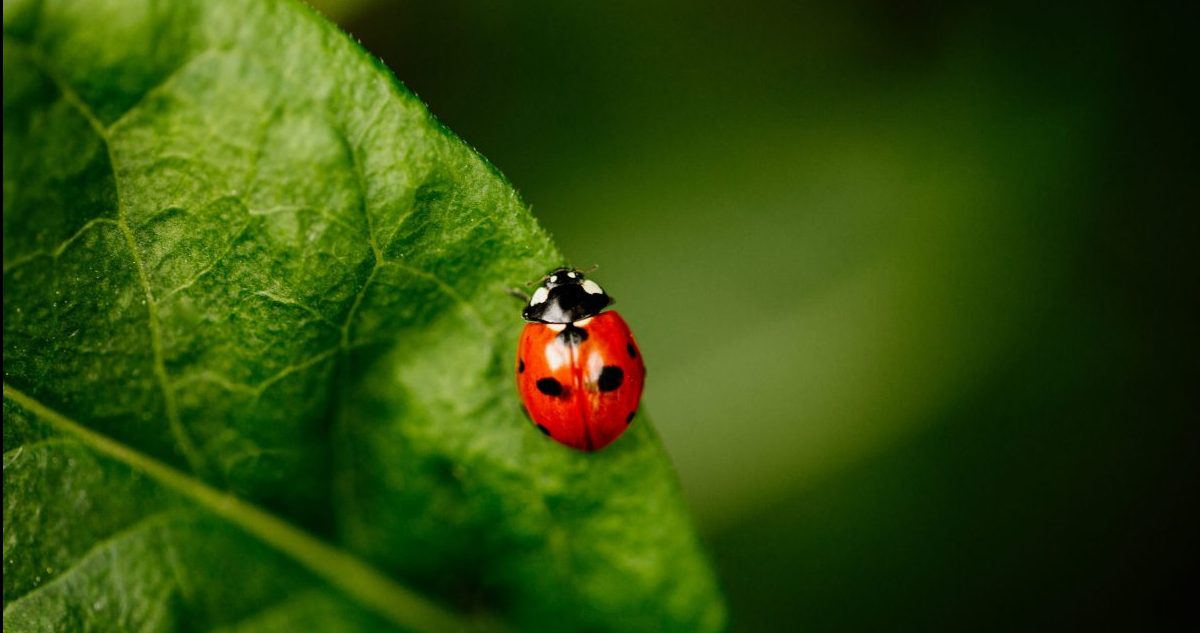
Ladybugs look cute and harmless but they are sturdy predators within their own world. Their delicacy of choice is the aphid, a pesky little problem child of the insect world that can run riot in your garden. Ideally, you’ll want to amass an army of ladybugs outside your house. Seeing them inside is nothing but a sign of mite, whitefly and scale infestation.
You find tracks and markings
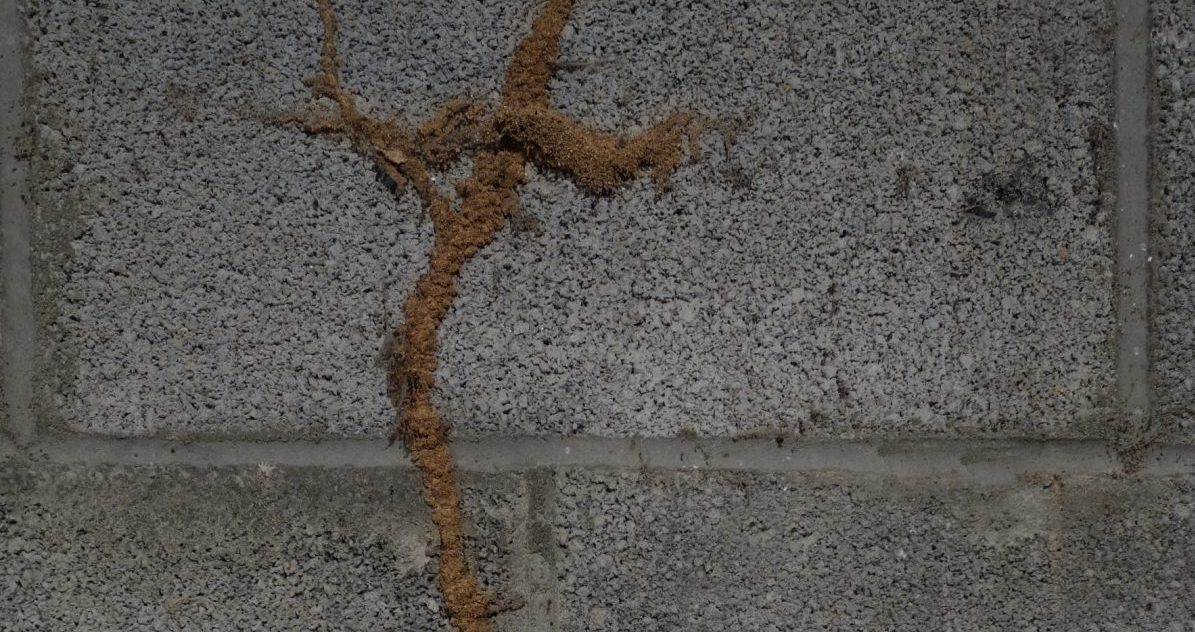
It’s not just droppings that you have to watch out for, but general tracks and marking. A lot of insects and bugs are dirty things, and will usually leave behind their own version of footprints. Cockroaches leave behind reddish streaks, for example. It’s hard to notice the tracks the smaller the insect is, but if you pay attention, it should become apparent.
You begin to hear noises

A throng of small insects working together can make an almighty sound. The larvae of many pests of timber, for example, can be heard as they gnaw wood. The sound has been likened to a nail being scraped across a piece of timber. Meanwhile, the larvae of wood wasps can gnaw so loudly it may sound like a mouse. So keep an ear out when the house is quiet to see if there’s anything you’re missing when the TV is on.
Your home and plants become damaged
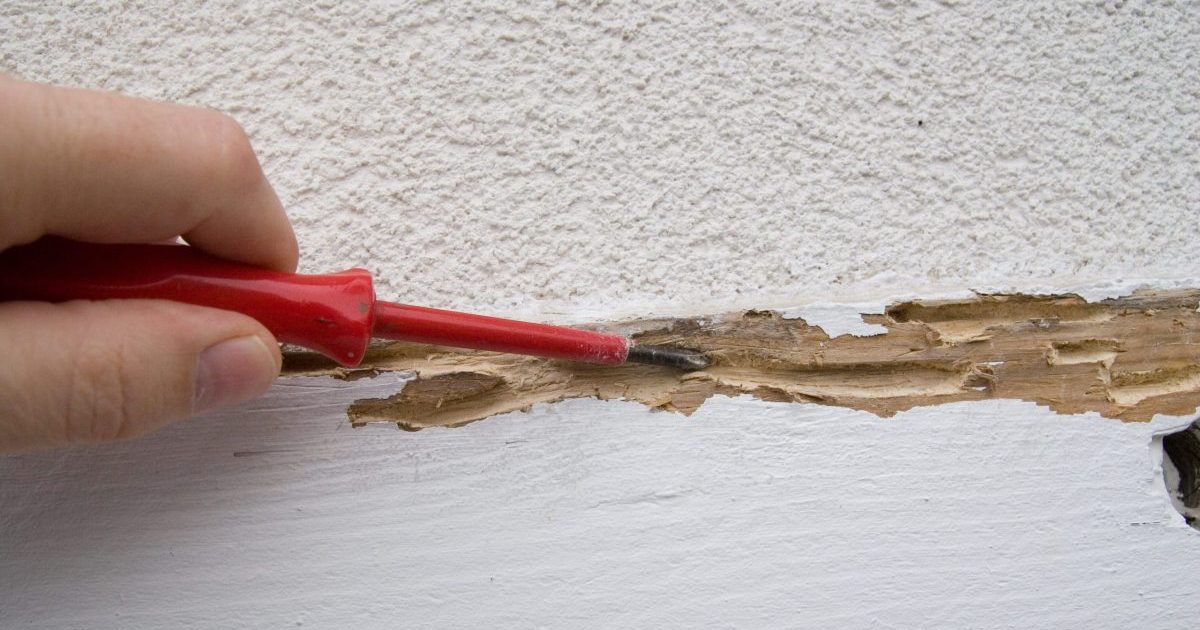
Bugs eat stuff. That’s usually their method of travel. An obstacle? Eat it and pop through to the other side. As such, you should do a quick glance over your plants and furniture now and then to see if you notice any random holes or rips. Termites will usually wreak havoc in basements and attics while moths can damage clothing by laying eggs that hatch and feed off of the materials.
You find skin
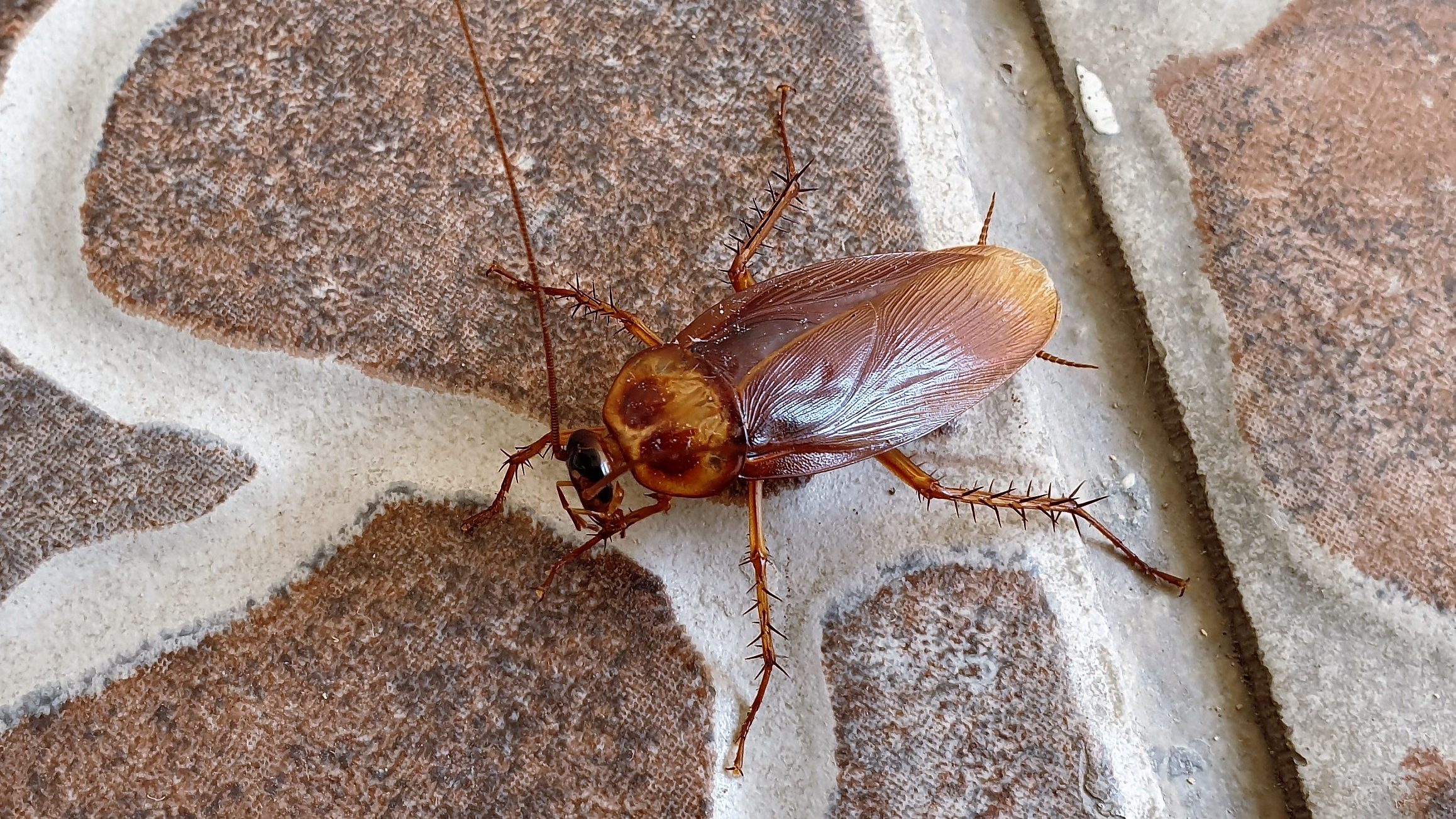
There’s something uniquely repellant about cockroaches, and the news that they shed their skin as they scuttle around your house does nothing to help. If you keep finding thin, papery brown skin that almost looks like cigarette paper, it’s time to get the exterminator on the phone.
Your pets keep scratching themselves

Fleas will opportunistically bite humans, but they’re actually far more interested in your pets. If you notice your cat or dog scratching itself more than usual, especially if it appears to be doing so with ferocious intensity, there’s a strong chance they’ve picked up an infestation of the bouncing, bloodsucking bugs.
Moth cocoons
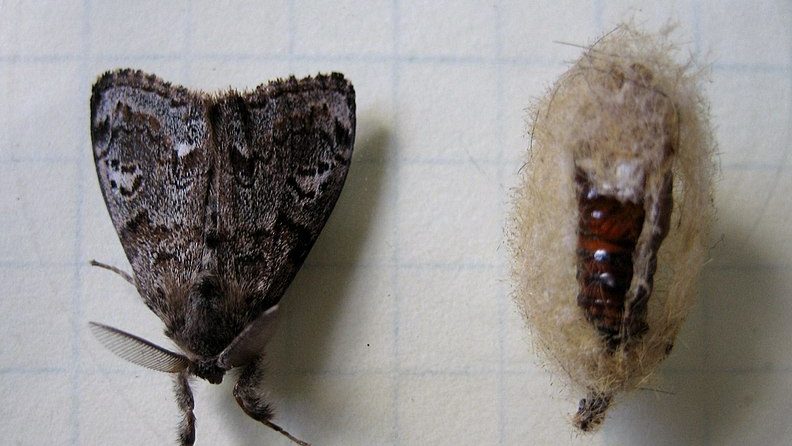
If you find moth cocoons in your home, you can more or less be certain that you’ve got an infestation on your hands. The cocoons look like small, hairy pods, and they are usually a dark grey or light brown with a musty smell. If the cocoon has a metallic shine, then it belongs to a butterfly and isn’t a cause for concern.
You spot hopping fleas

Fleas are tiny, around one eighth of an inch in length, but they can be spotted by the human eye. You’re most likely to see fleas hopping on your carpet, curtains or other fabrics, and they’re so fast that you might not be sure you’ve actually seen anything. However, if you keep thinking you see tiny specks bouncing around, you might not be imagining it.
You spot bed bug shells

As baby bed bugs (known as nymphs) mature, they grow out of their shells and discard them. These shells are often one of the first signs that people spot when they have an infestation. They are normally a light straw colour and slightly translucent, and they can have a distinctive, pungent odour.
You find eggs
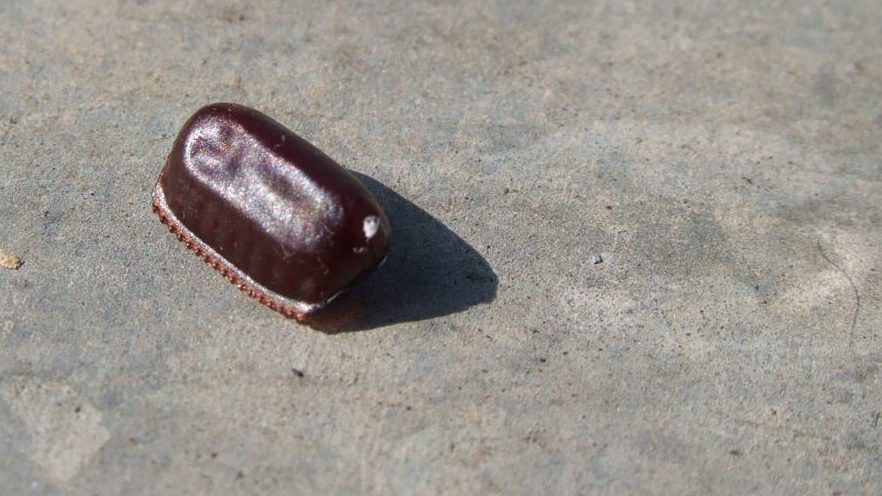
Cockroaches lay eggs at a prodigious rate, with a single female capable of giving birth to 800 new roaches a year. This is the reason cockroach infestations can grow out of control in no time, so you should seek professional assistance if you happen to find the dark, brown egg capsules that cockroaches lay.
You find blood stains on your sheets

Like many bloodsucking creatures, bedbugs inject an anticoagulant as they feed to prevent blood clots from ruining their meal. As a result, bedbug bites tend to bleed for some time after the insect has finishing feeding, leaving telltale stains on sheets and pillows. This sign generally appears shortly before people start noticing itchy bites on their bodies.
A trail of ants
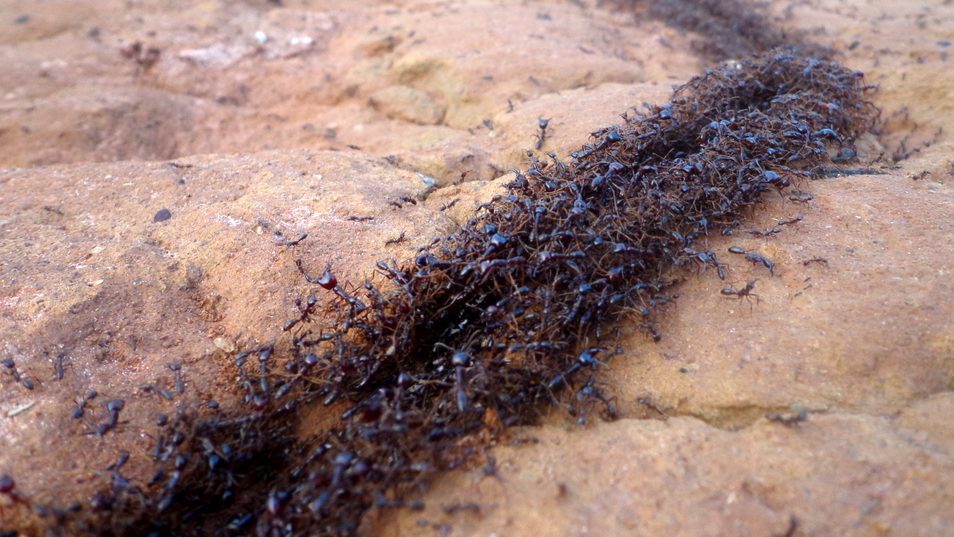
Spotting a few ants inside your house is rarely a sign of trouble, and usually just means the insects have gotten lost. An uninterrupted chain of ants, on the other hand, usually means you’ve got an infestation on your hands, especially if the chain is moving in both directions and carrying food or other items.
Moth holes in your clothes
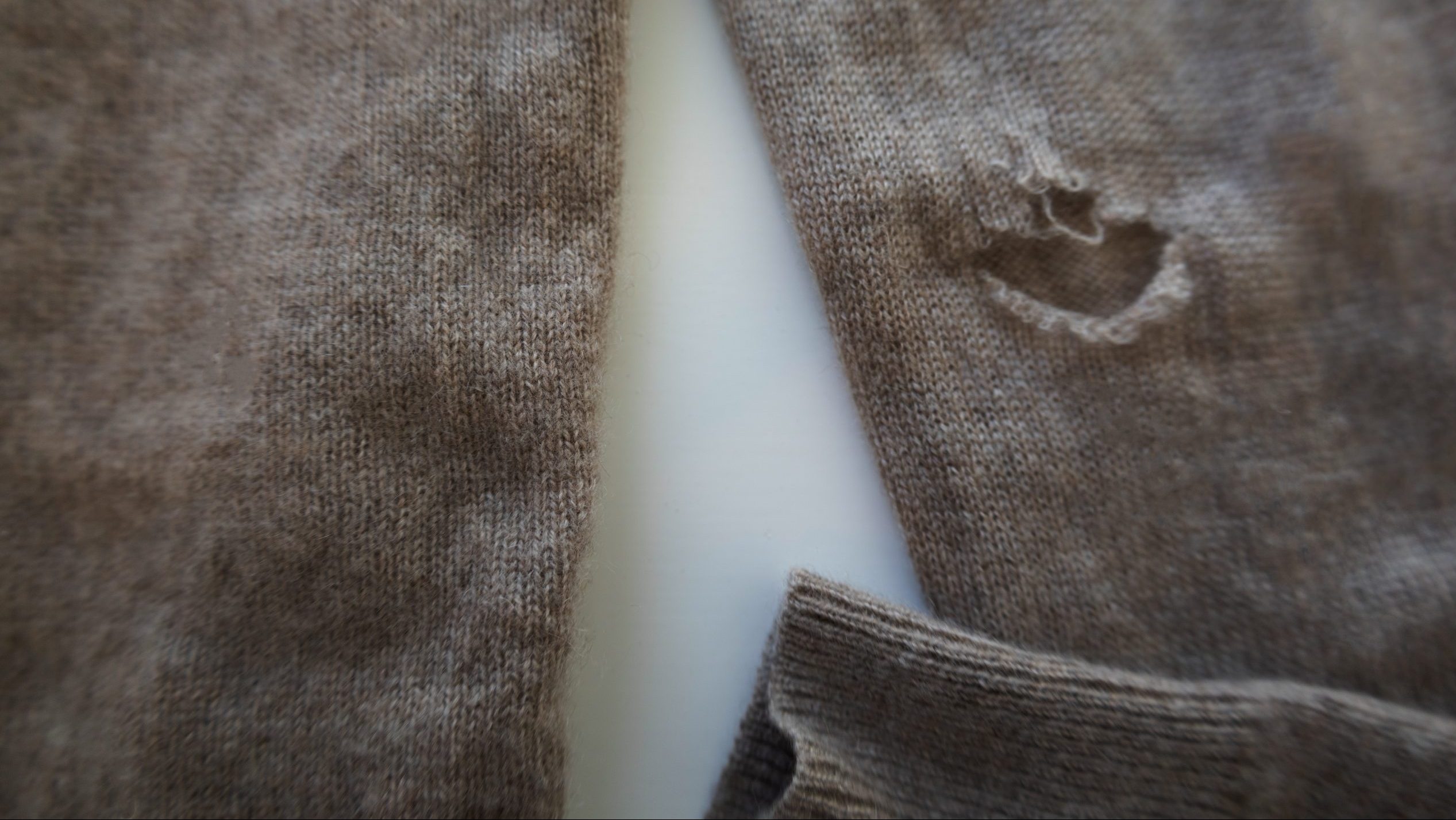
Moths can be one of the most irritating creatures to infest your home, thanks to their penchant for eating your clothes. The telltale sign of a moth infestation is seat holes spontaneously appearing in clothes that have been hanging up in wardrobes, with the insects preferring articles made out of wool, silk or fur.
Piles of dirt on your garden
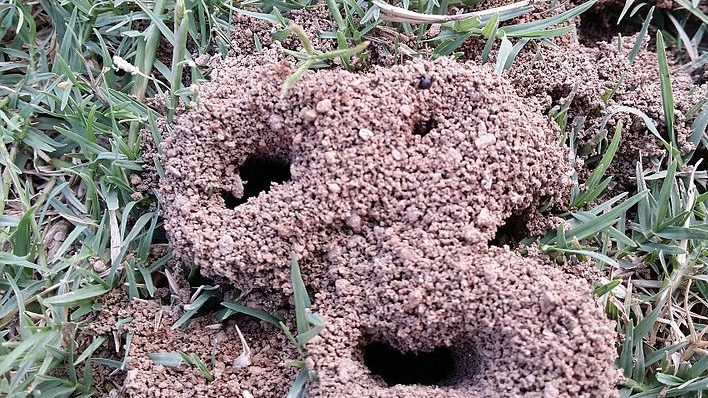
If you spot piles of dirt stacked up on your garden, it could mark the entrance to a new ant nest. As the insects excavate their new home they carry out soil and other dirt, piling it up near the entrance. Over time, the ants’ digging can begin to affect house foundations, eventually even leading to subsidence.
Your floorboards are creaking
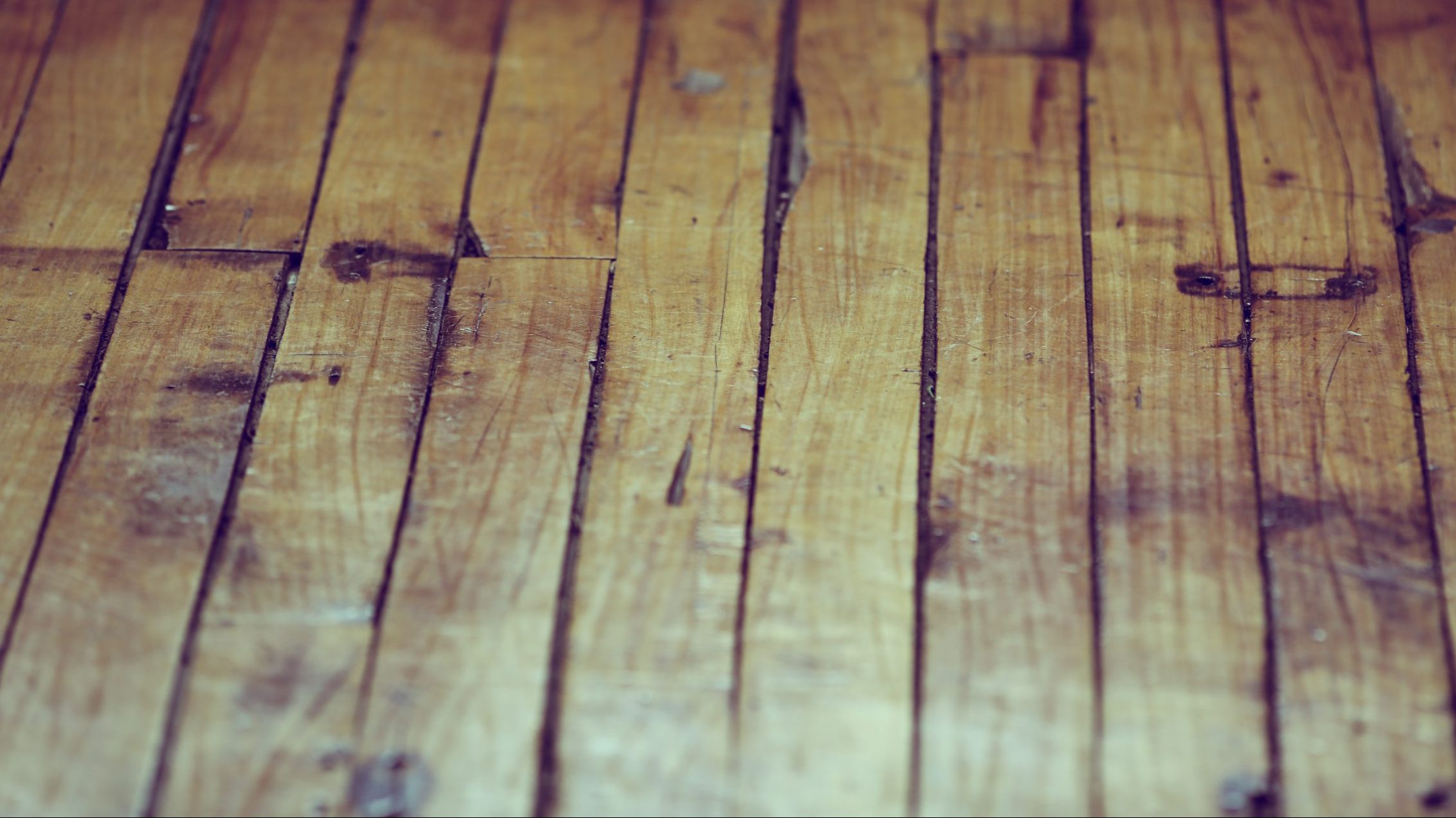
Floorboards make tempting targets for termites, and they are often one of the first areas of a house to sustain damage during an infestation. As floorboards are weakened by termites, they will become more sensitive to movement, resulting in them becoming noticeably squeakier over time.
You find flea dirt
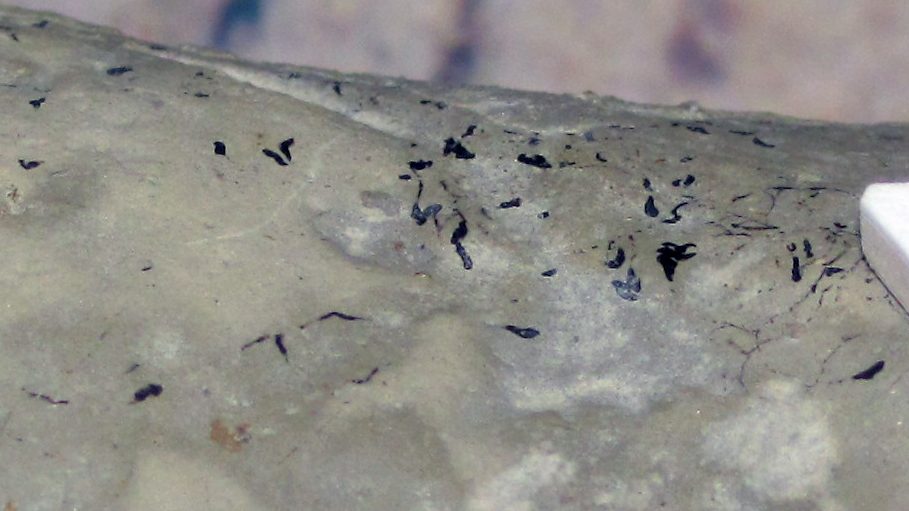
As fleas leap around your home in search of their next gruesome meal, they sometimes leave behind microscopic “flea dirt,” which over time can build up enough to become noticeable. This dirt looks like reddish-black streaks or particles, and you’re more likely to notice it on light fabrics, such as your bed sheets.
You spot larvae crawling around
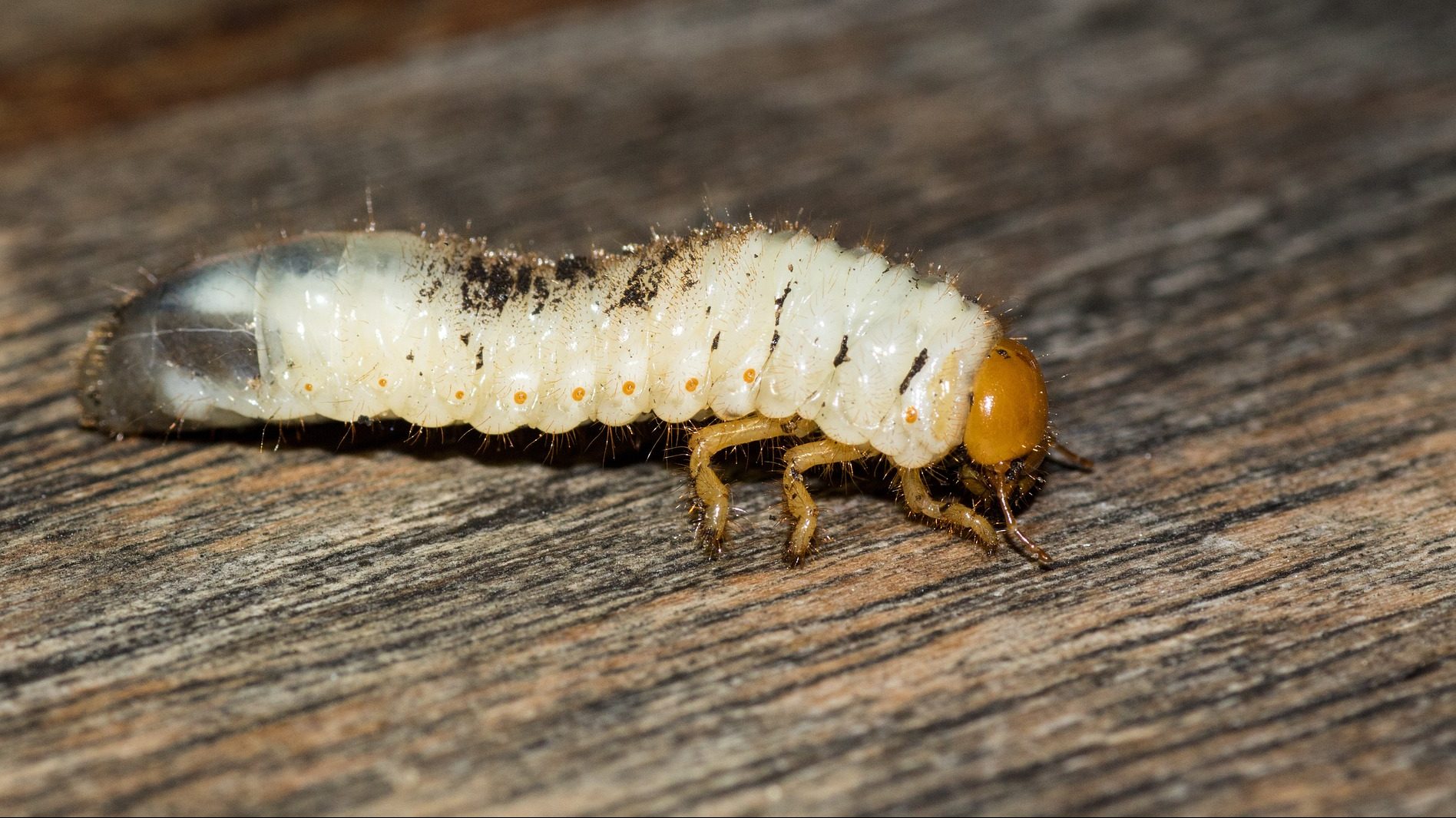
Insects have one of the most fascinating lifecycles in the animal kingdom, starting as worm-like larvae before metamorphosing into their final form. If you spot larvae crawling around your home, it probably means that an insect has laid its eggs in your house, and you should act promptly before you find yourself dealing with a full blown infestation.
You find mud tubes on the foundation of your home
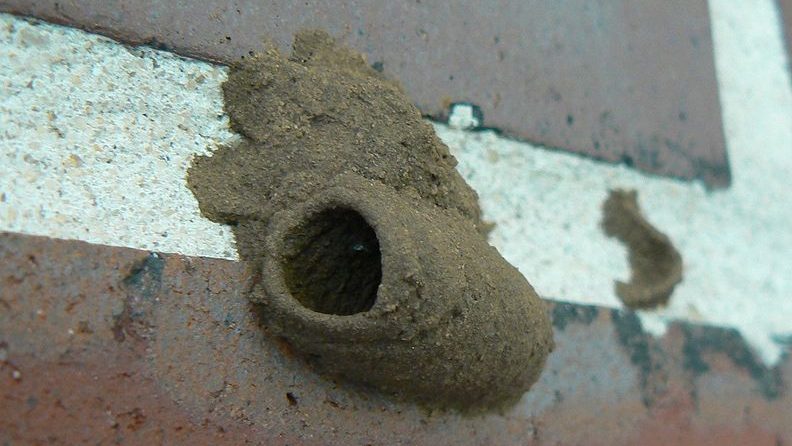
One of the telltale signs of a termite infestation is so-called mud tubes, which are small tunnels that the insects dig around their nests. These tubes are around the width of a pencil, and the termites use them to travel in safety between their nest and a source of food – such as your new chest of drawers.
You find maggots
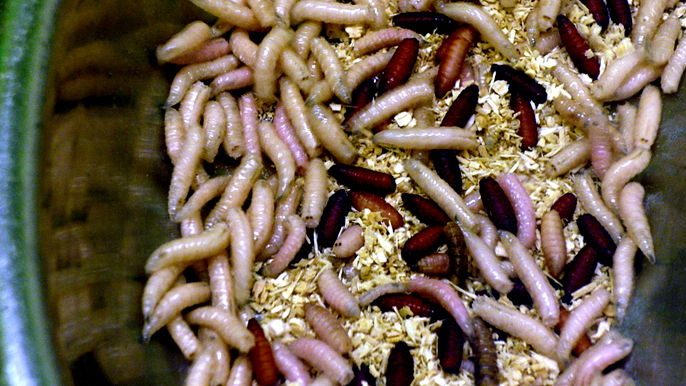
Flies like to lay their eggs on decaying food to ensure that the maggots that hatch out of them have ample food to sustain them after they spawn. Unfortunately, this often results in the winged insects laying their eggs inside kitchens, particularly in food waste bins. If you spot maggots, you have a short window before the problem turns into a fly infestation.
You find baby centipedes
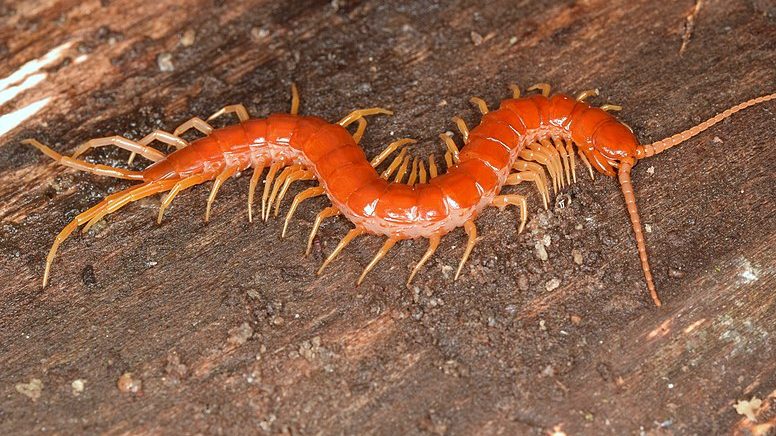
Centipede infestations are rare, but occasionally these creepy crawlies will invade homes in search of insects to prey on. If you spot baby centipedes running around the place, it’s a good sign that one or more adults has set up shop in your home. While they aren’t harmful to humans, their numbers can still quickly explode, meaning you should definitely call an exterminator.
The windows or doors in your house are sticking

If a door or window in your house is suddenly sticking when you try to open it, it could be an early sign of a termite infestation. Window and doorframes often have exposed wood, and thus are easy for the insects to reach. Over time, termite damage can cause the frames to warp, leading to sticking issues.
Wasps flying in the same direction
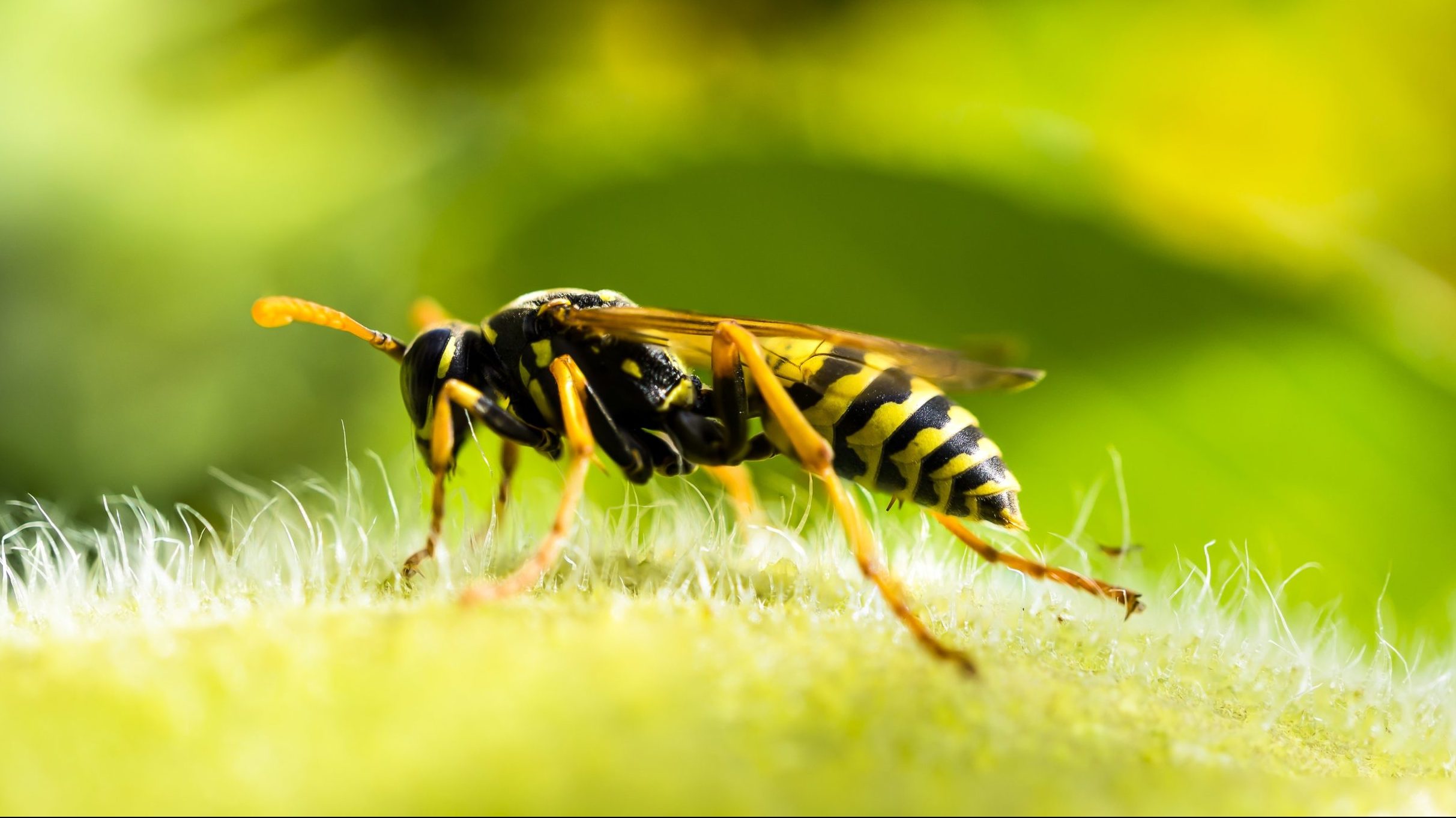
Wasp infestations can quickly ruin what should be idyllic summer months, with the stinging insects menacingly lurking around your house in huge numbers. If you see a lot of wasps in your garden or near your bins, and most of them seem to be flying in the same direction, it could be because they’ve built a nest somewhere in your home.
Bubbling paint
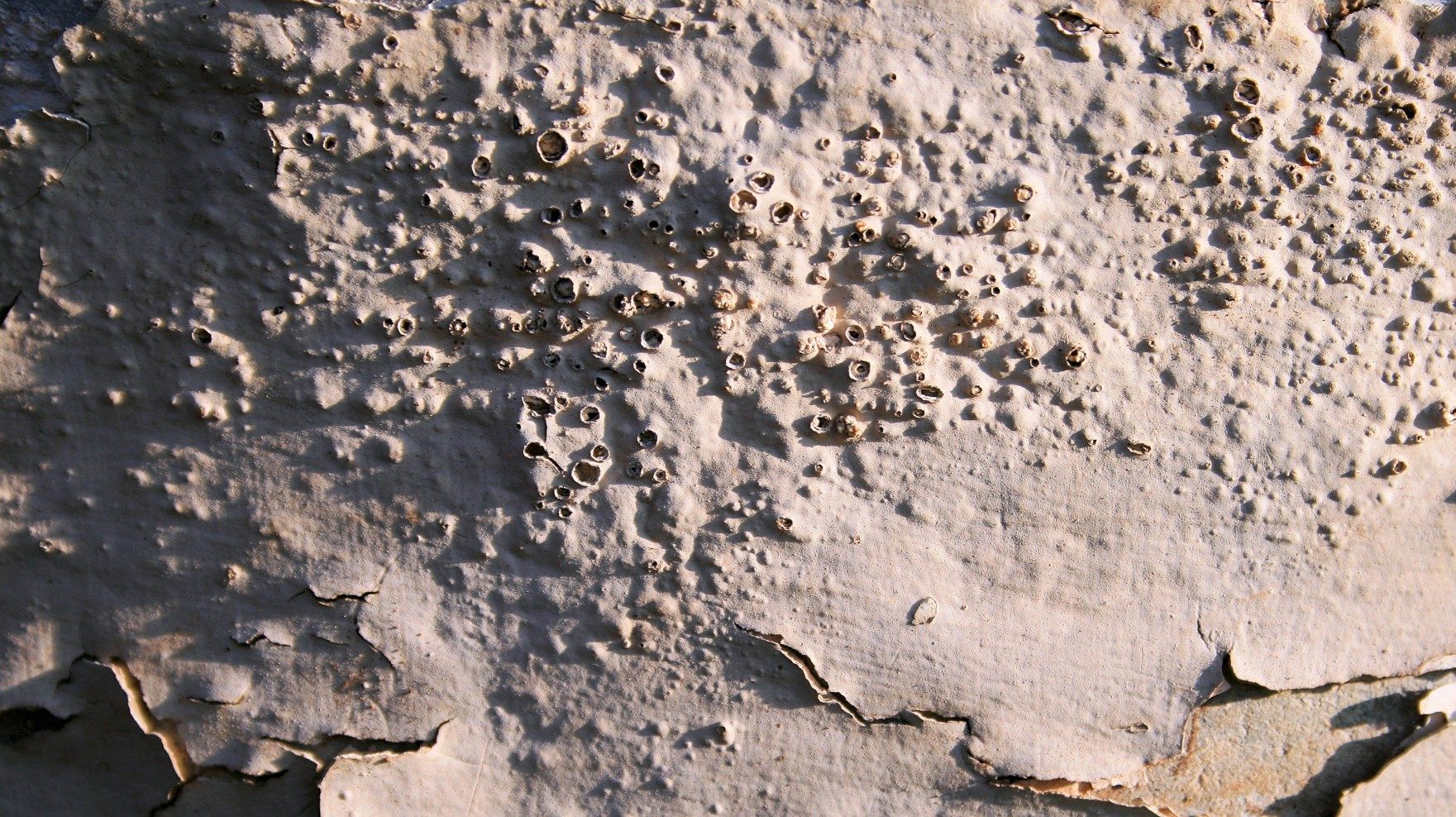
Paint often hides termite damage, which is why infestations are most commonly discovered when people redecorate. Sometimes, however, the insects’ activities do result in visible damage to the paintwork that covers wooden furniture and fixtures. Patches of discolouration or bubbling are both signs that termites are feasting on the wood beneath the paint.
Damaged wood
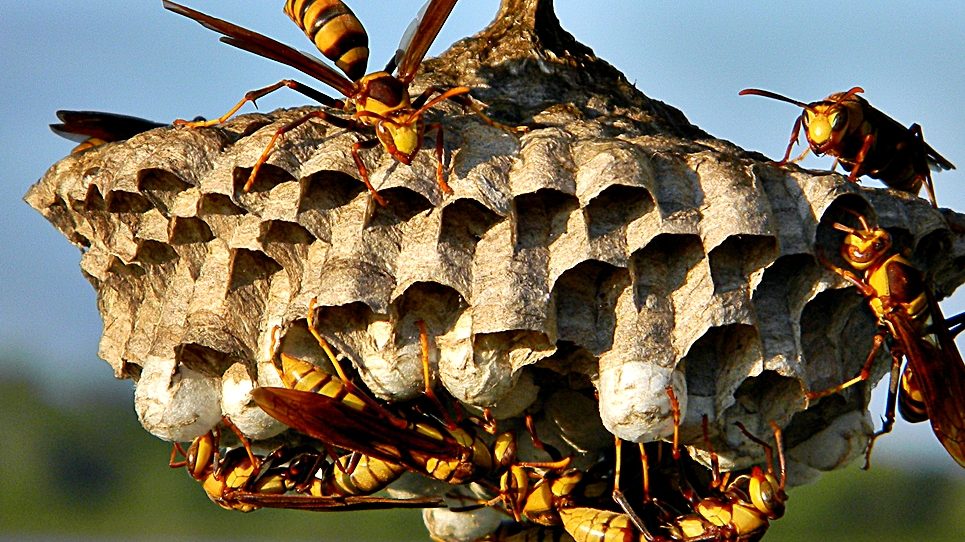
Certain species of insect, such as paper wasps and hornets (the latter being perhaps the scariest infestation to deal with), build their nests out of a mixture of chewed wood and saliva. If you find damage to wooden structures around your home, it could be because winged insects are taking chunks out of them to build their own home.
You keep finding wings
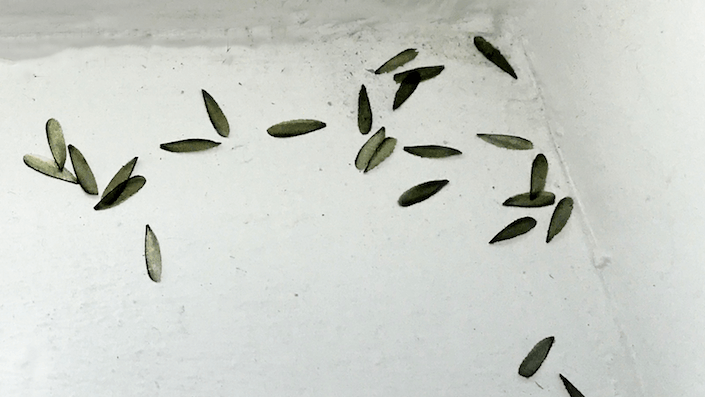
Once they have established a colony, termites produce winged individuals which take to the air to mate. Once they have reproduced, these termites lose their wings, which can look strikingly similar to fish scales when they dry and often form into piles, serving as an ominous warning sign of the infestation.
Piles of sawdust on your decking
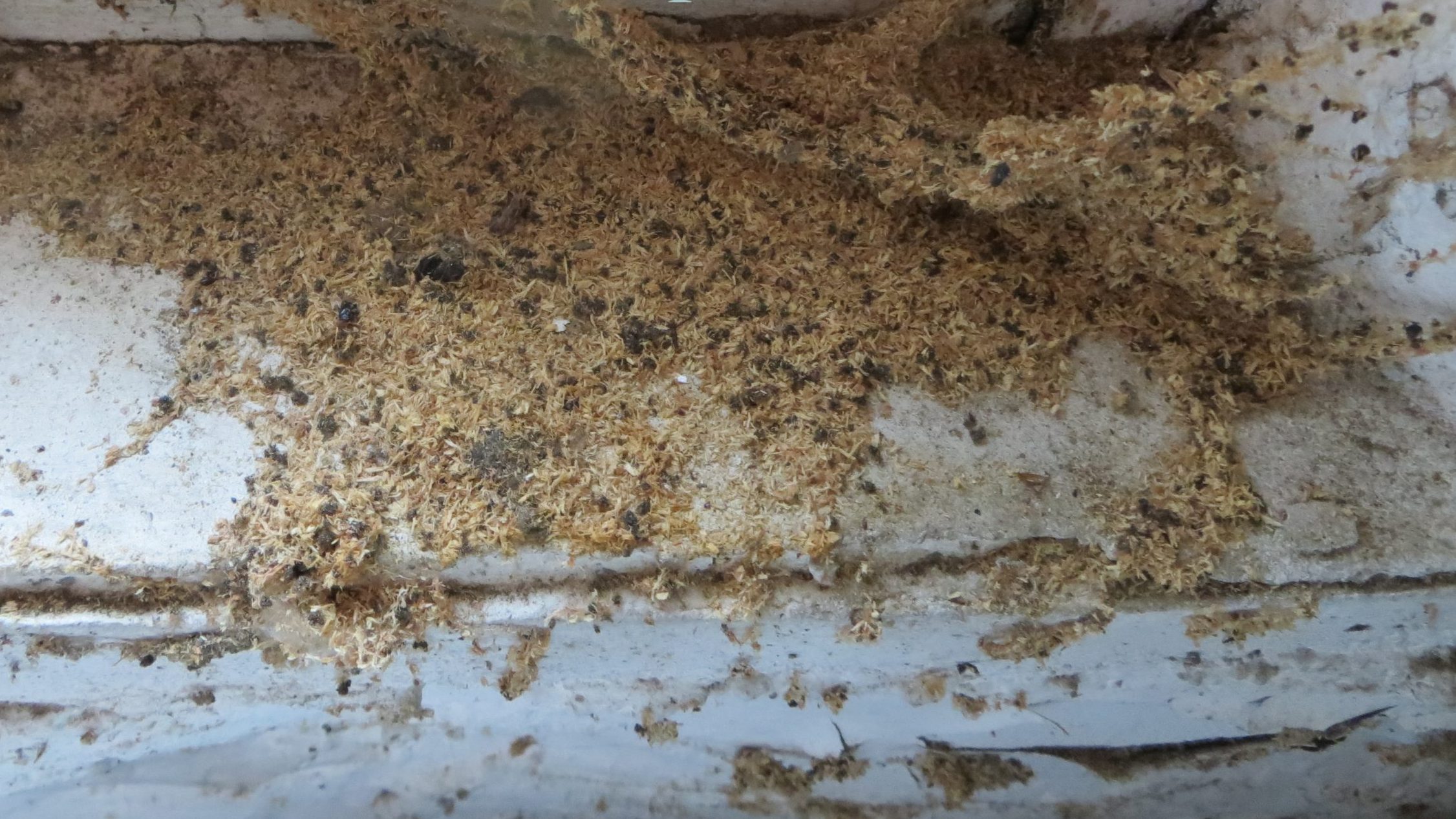
As their name suggests, carpenter ants build their nests by using their powerful mandibles to chew burrows into wood, and they have spelled doom for many a patio. While the holes that carpenter ants dig can be hard to spot, they leave obvious piles of sawdust at the entrance to their nests.
Dead bugs

Many species of insect have short lifecycles, so it’s not unusual to find dead bugs in your home from time to time. However, if you’re finding deceased creepy crawlies with increasing regularity, especially if they all belong to a single species, it’s probably because there’s a high number of the bugs in your home. In other words, you probably have an infestation.
Signs of feeding
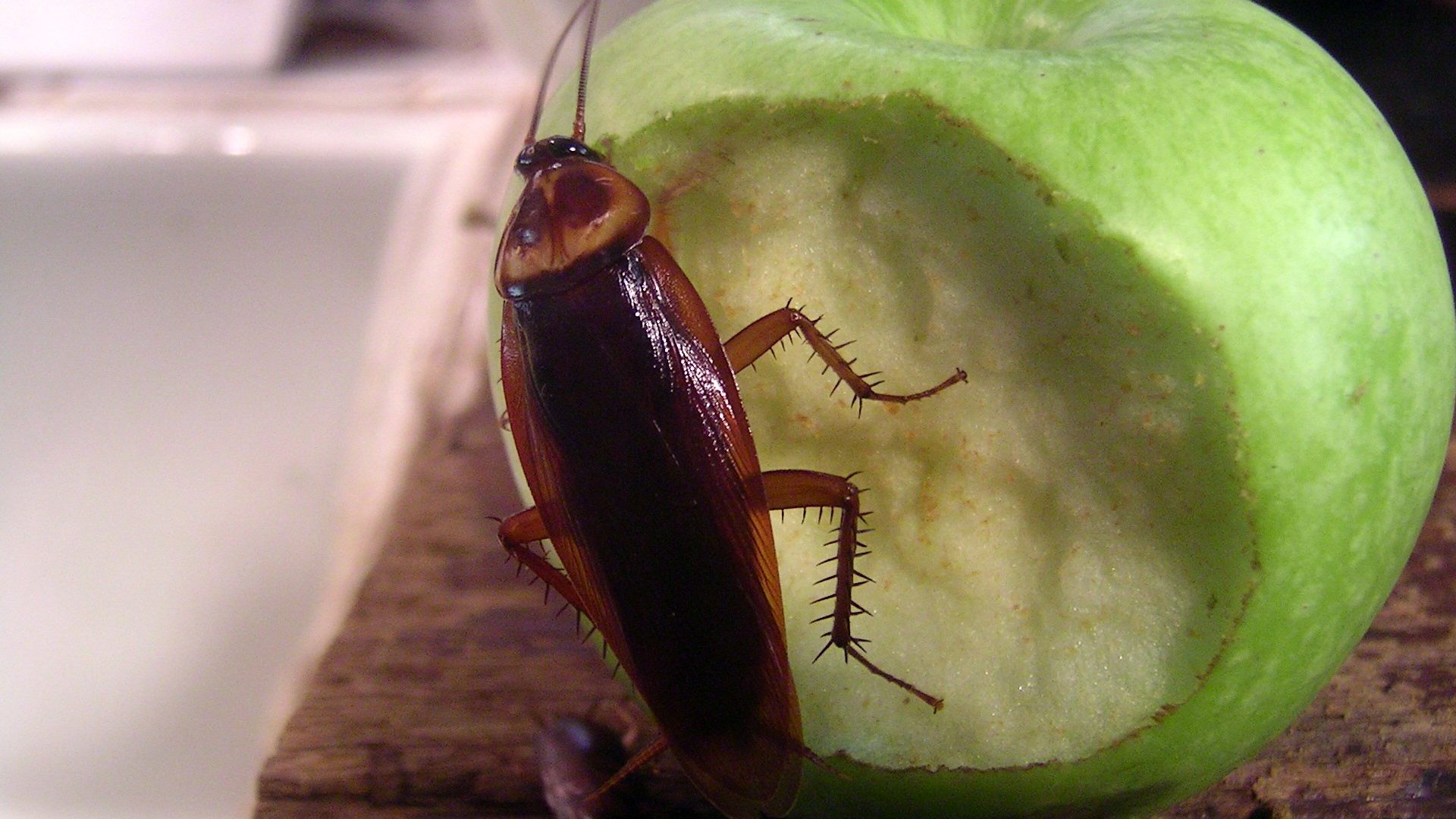
Cockroaches are voracious feeders, and will consume anything they can get their mandibles on. While this includes things like houseplants and wallpaper, cockroaches prefer actual food, and they will often chew through packaging to get to it. Pet food is also often eaten, as well as food left on plates when you aren’t looking.
You have clusters of bites
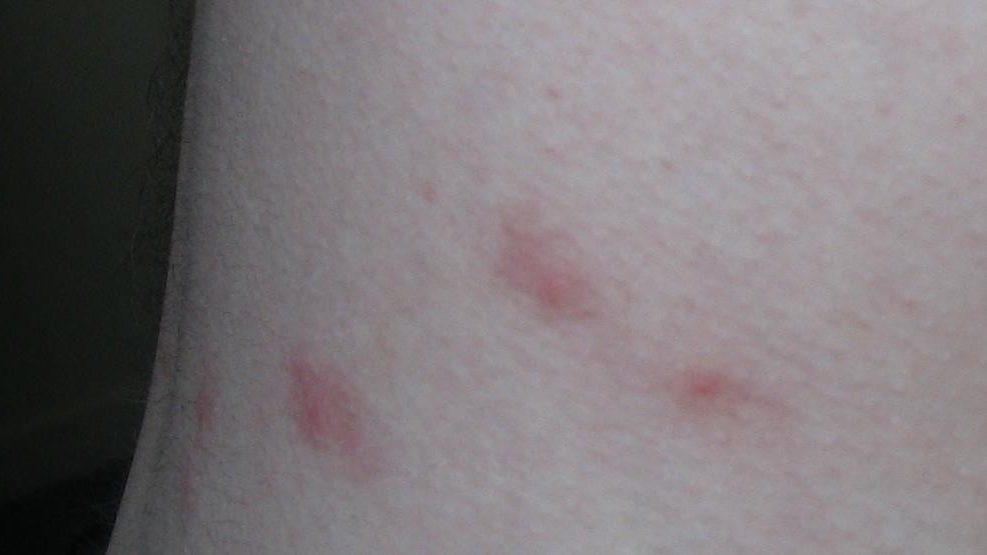
If you keep finding clusters of incredibly itchy bites on your body, you’ve probably got a flea infestation. Fleas will generally bite you on your legs and ankles, leaving between two to five bites in a single feeding session, although they may also target moist areas such as armpits and groins while you sleep.
You‘re having allergy symptoms

Many people are allergic to the the exoskeletons and faecal matter that cockroaches leave in their wake. If you’ve suddenly developed allergy symptoms that appear to be worse in certain rooms, especially if you’re not generally prone to allergies, investigate for other signs of a roach infestation.
Dark spots on bedding

Unsurprisingly, most of the signs that you have a bedbug infestation can be found on your sheets. As well as the trademark bloodstains that are the result of the insects feeding on you in the night, small dark spots on your sheets are often left by bedbug excrement.
Damaged electrical wires
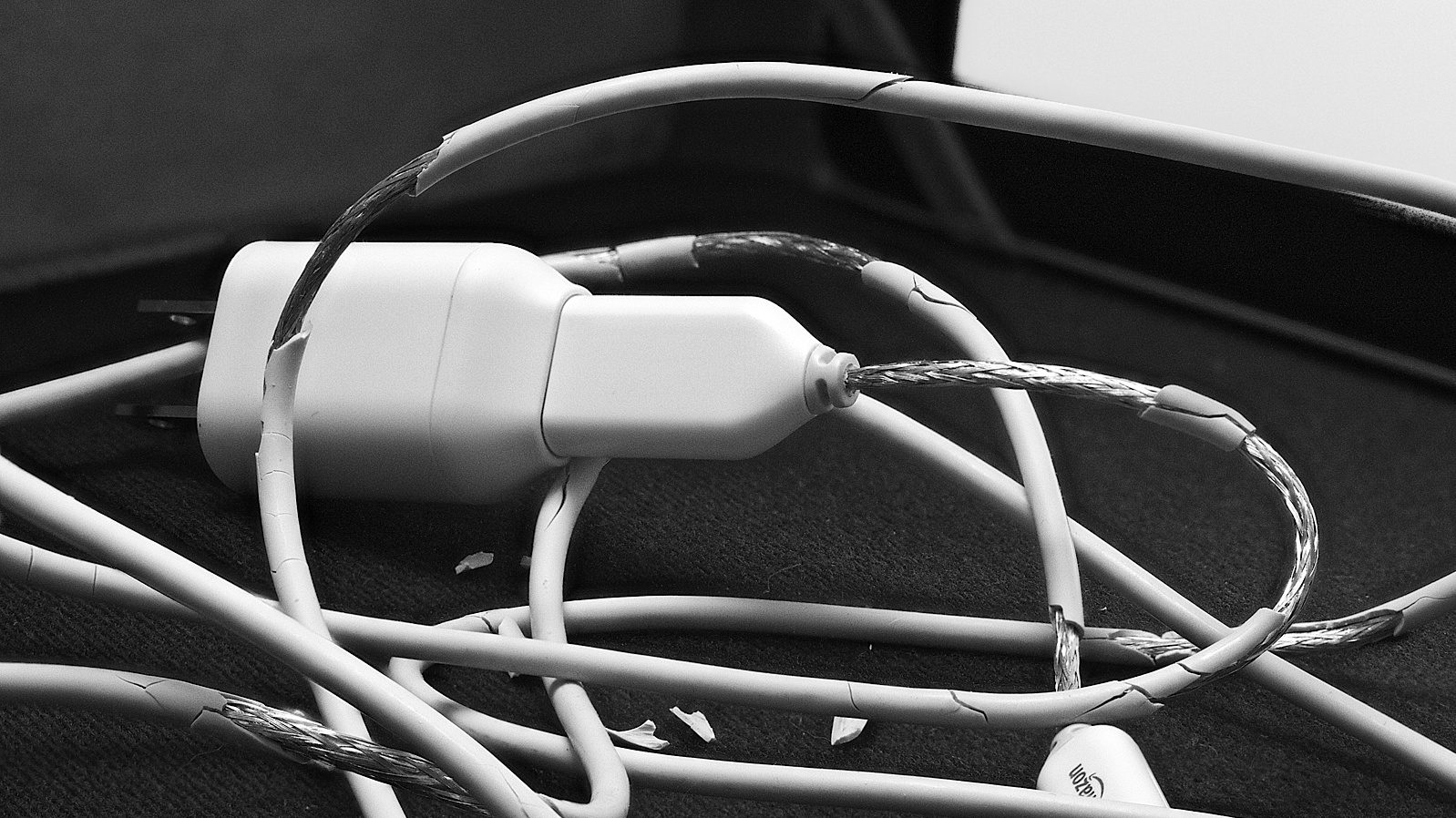
Ants will chew their way through pretty much anything in their path, including wood, concrete, and electrical wires. If your appliances are starting to malfunction, check the wiring for signs of damage, and bear in mind that exposed wiring can be an extremely dangerous fire hazard.
You have sloped floors

Floors that begin to slope or sag are often one of the first signs that something is going wrong with your home’s foundations. While there can be a number of causes for this, one of the most common is a termite infestation. The insects are masters at evading detection, and over time they can cause serious structural damage to your house.
You find rows of bites
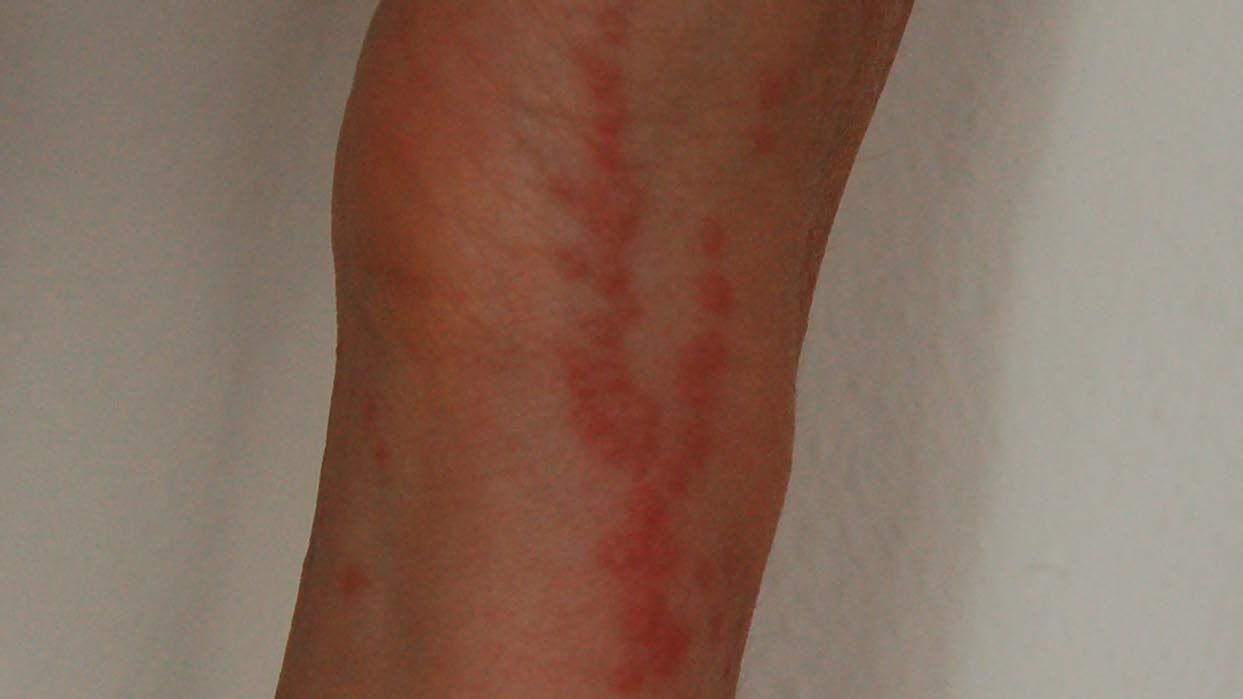
Bedbugs feed on your blood at night, injecting an anticoagulant that leaves itchy, red bites which generally appear in easily identifiable rows. This is because bedbugs tend to feed in groups, and they normally stay close together while doing so. If there are large numbers of bugs, the rows can also form into zigzag patterns.
Blisters in wood

As termites feed deep within wooden structures, their activity can cause changes to the surface of whatever it is they’re eating. Strange blisters or discoloured patches on wooden surfaces such as chairs, tables and stairs can all be signs that termites have made their way inside.
Disfigured plants
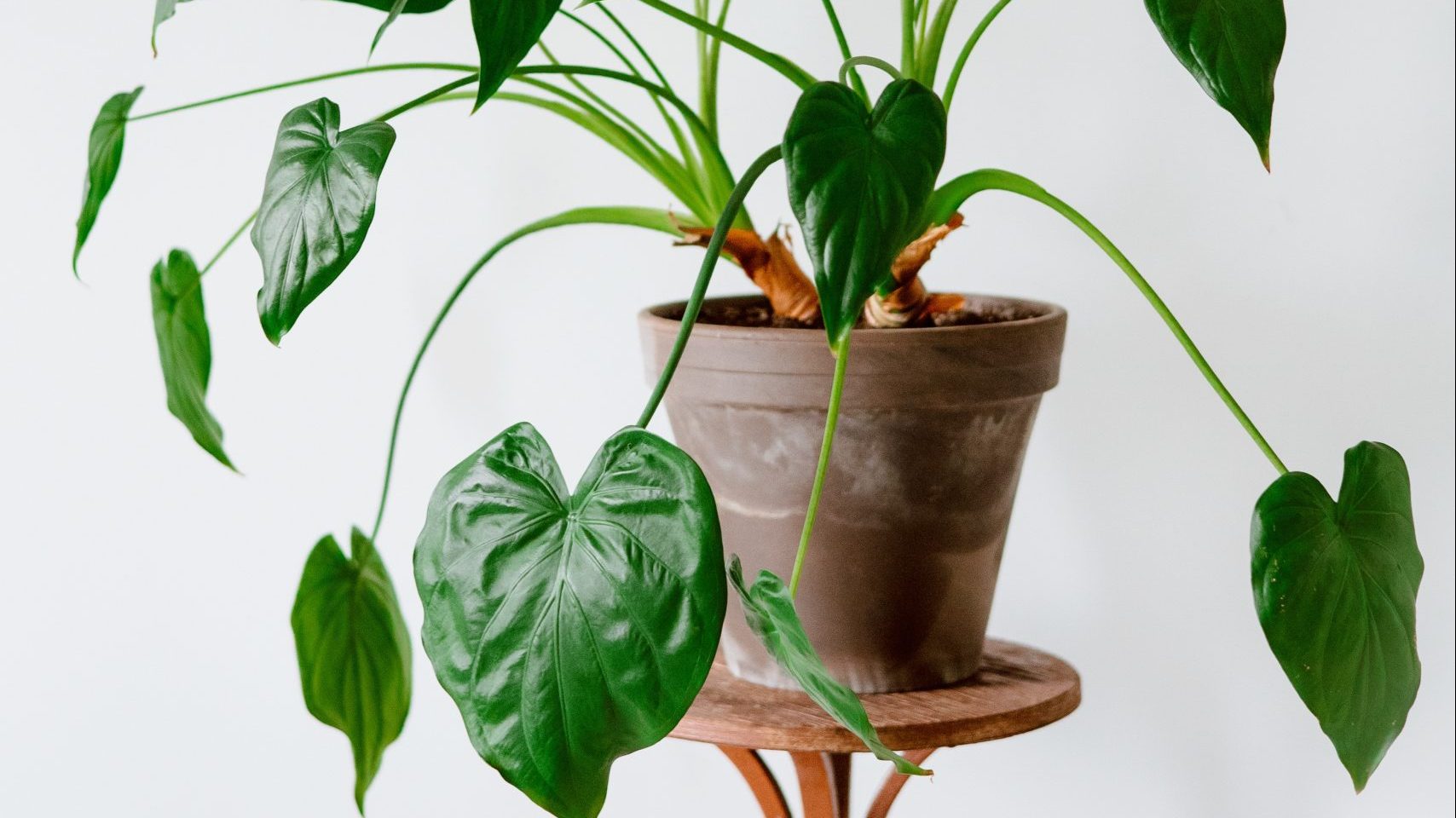
Aphids are tiny insects that survive by sucking the sap out of plants. Over time, this can weaken the plant, resulting in shrunken, misshapen leaves and curled stems. If you notice any of your houseplants exhibiting these signs, thoroughly inspect them to see if an aphid colony is to blame.
Finding silverfish skin
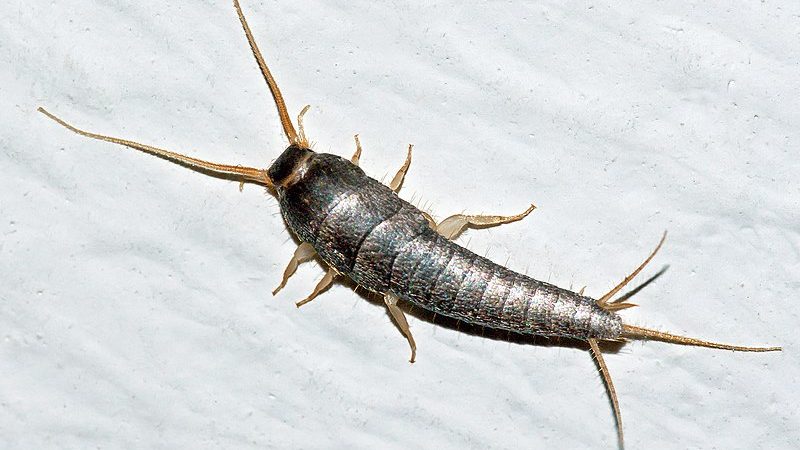
Like many species of insects, silverfish continually shed their skin throughout their lives. Silverfish skin normally looks like translucent plastic, and it can often be found sticking to walls. You might also find yellow stains caused by the moulting process around the skin. Take these as signs of a potential bug problem.
Sagging patches on wood

If termites burrow into larger wooden structures, such as staircases or flooring, their activity can eventually lead to structural damage, which can manifest as sagging patches on the surface. This is particularly concerning with staircases, as eventually the wood can become so weakened that it gives way.
You find termites
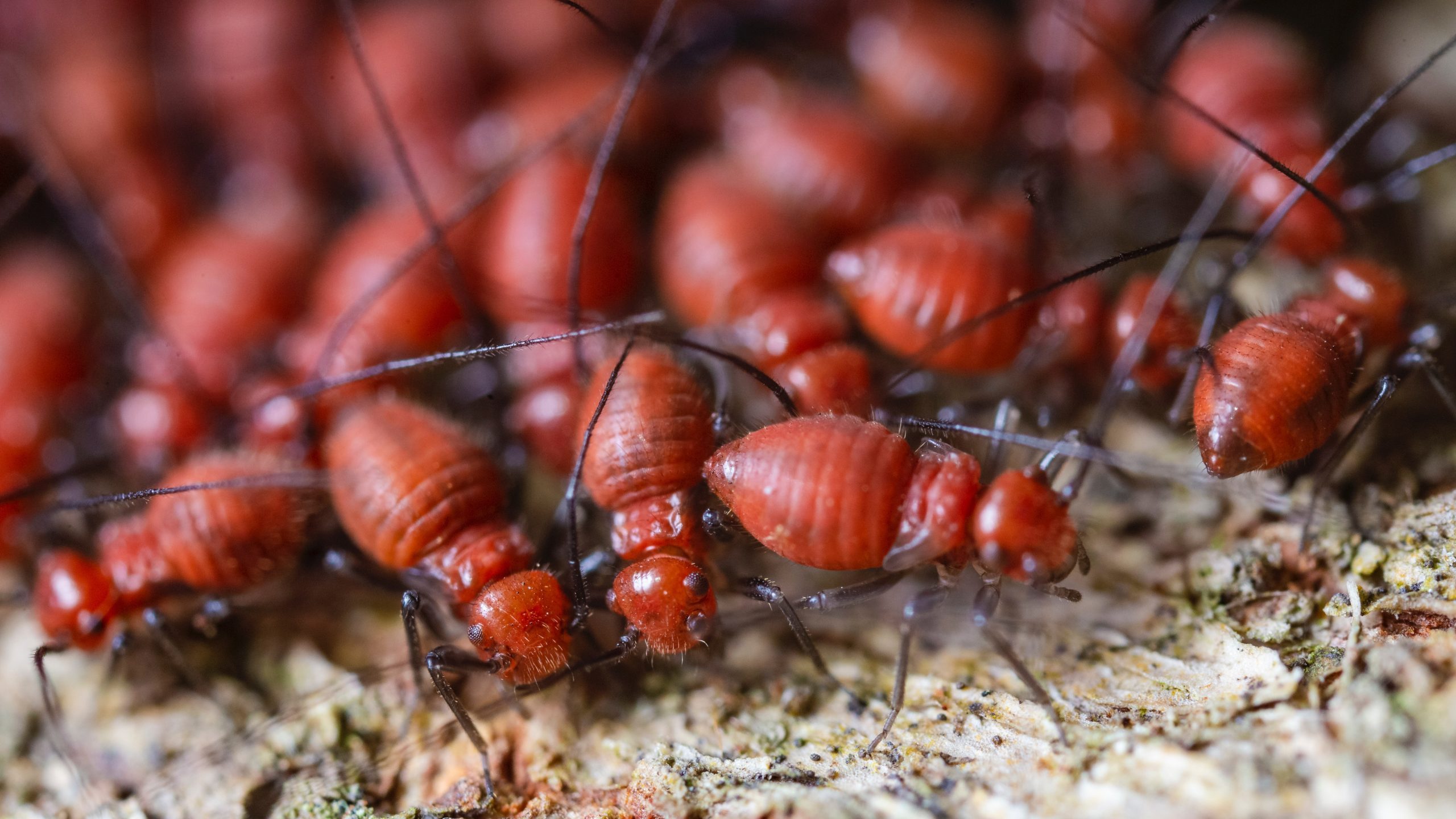
Termites are masters of stealth, and you can often have an infestation for years without ever catching a glimpse of one of the voracious insects. Certain activities, however, increase your chances of stumbling across a live termite, so you should always keep an eye out when you’re redecorating or remodelling your home.
You’ve got patches of dead grass on your lawn
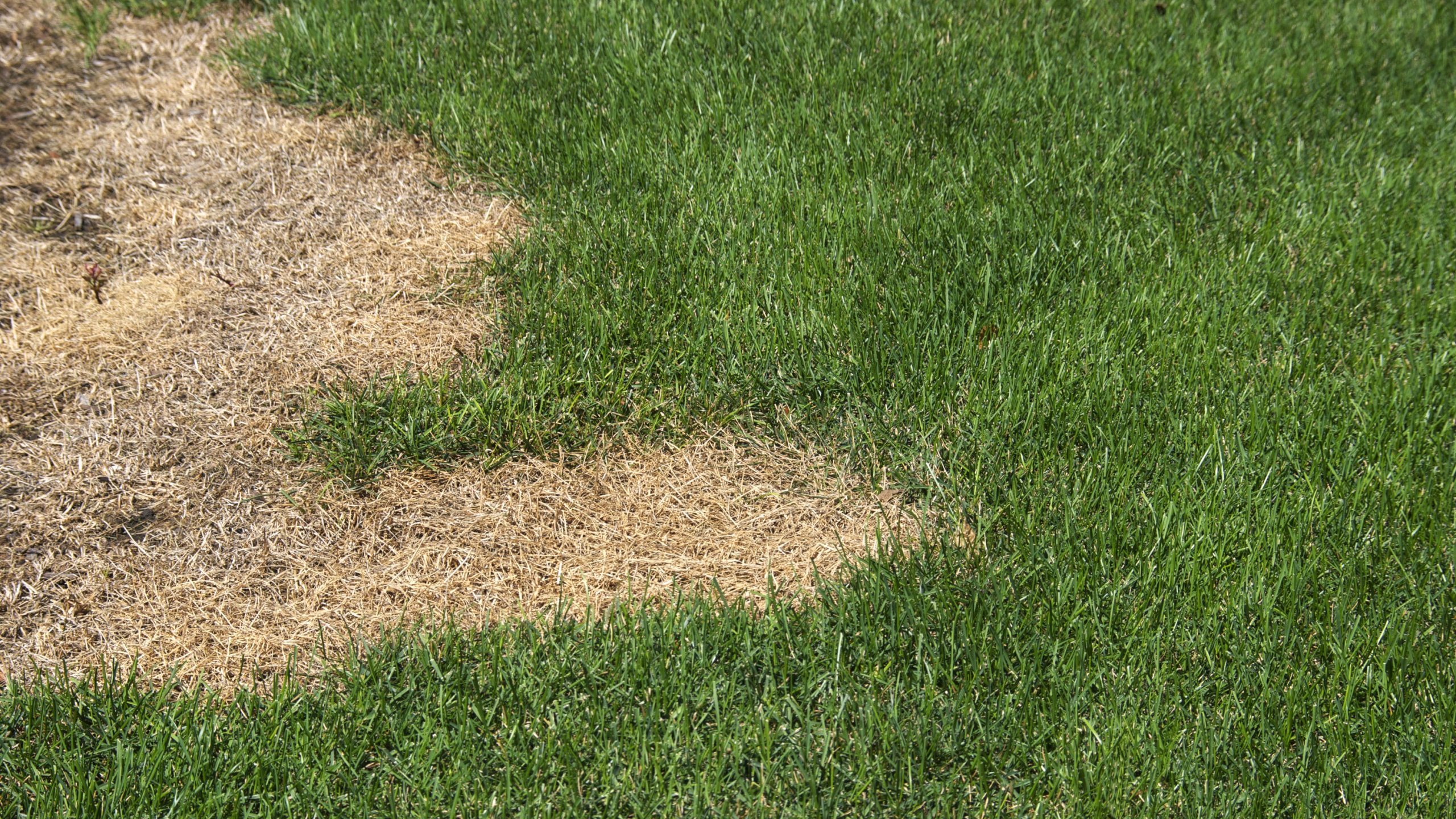
Crane flies might be prone to igniting panic by flying directly into your face, but apart from that they’re completely harmless to humans. Still, while they won’t hurt you, they can hurt your lawn. Crane flies lay their eggs in garden soil, and once these hatch the larvae can live there for up to a year, consuming grass and leaving dead patches on your lawn.
A persistent smell of mold

Termites are particularly fond of wood in moist environments, which often emits a distinctive moldy scent. If you keep smelling mold but can’t locate its source, call in pest control to thoroughly inspect for termites. Even if a colony has yet to set up shop, it’s wise to remove any damp wood as a preventative measure.
Silvery patches on plant leaves
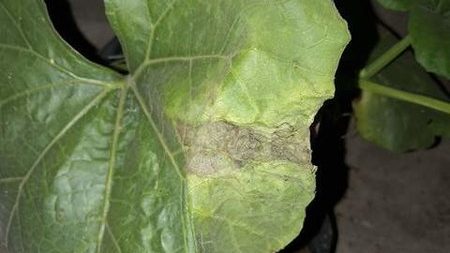
Thrips are tiny, winged insects that feed on plants, both indoors and out. Leaves that have been fed on by thrips tend to develop patches of silvery discolouration, and may become thin and papery. Closer inspection of these silver patches will normally reveal tiny black dots, which are droppings left by the thrips as they feed.
Hollow sounds in wooden beams
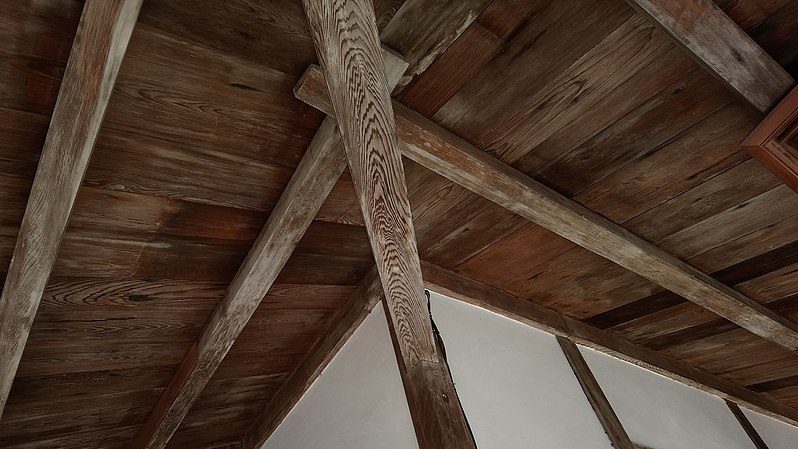
If your house contains exposed wooden beams, it’s a good idea to give them a knock every now and then. Wood should have a dull sound, and if tapping it produces a hollow noise you need to call in a professional. A number of species of insect, such as carpenter ants, can easily hollow out wooden beams, leaving them prone to collapsing.
Finding dead woodlice
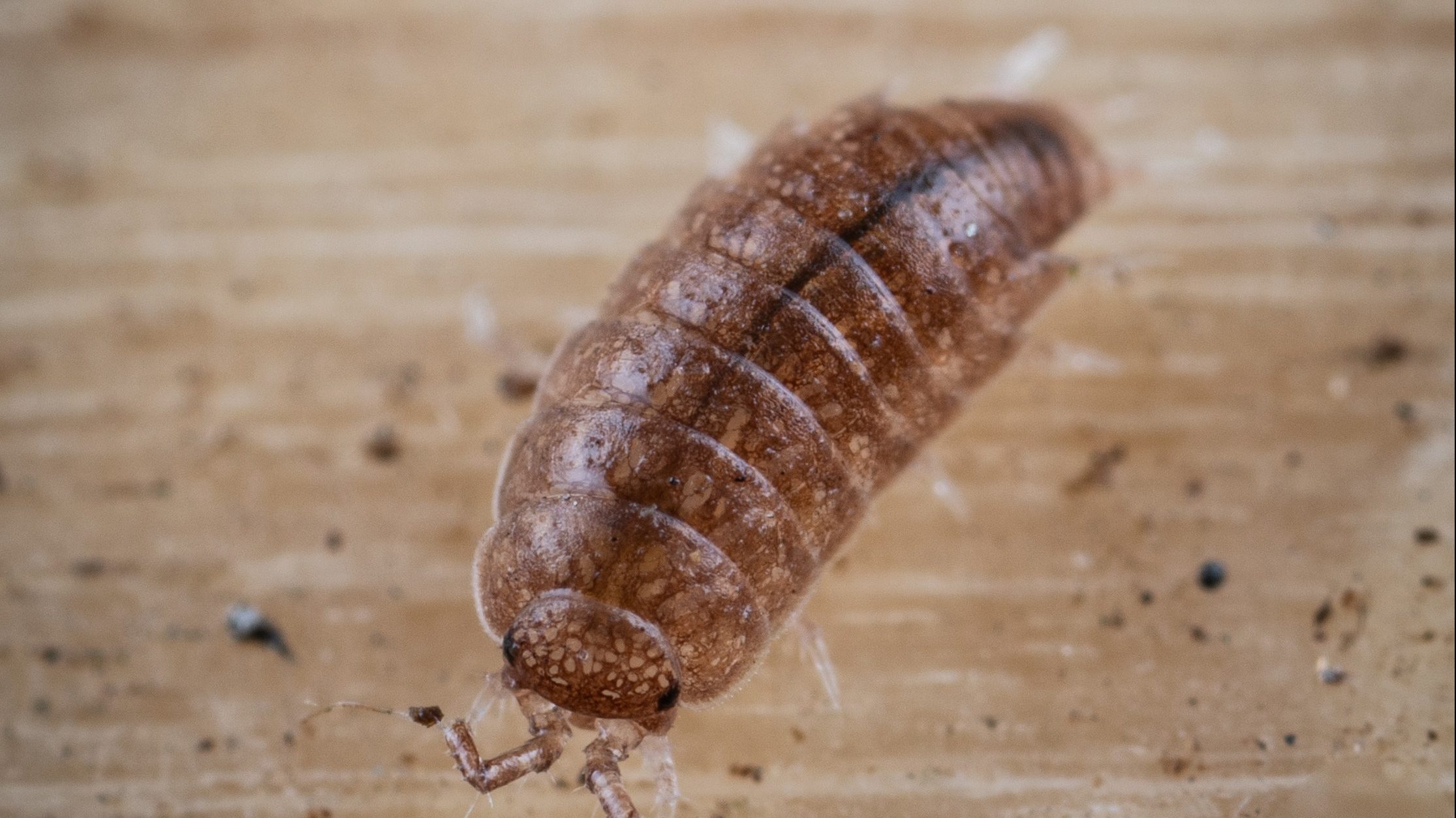
Woodlice, also known as pill bugs, are slow-moving pests that generally live outside. Sometimes, however, they can wander into homes, either by mistake or in pursuit of food. While they aren’t harmful to humans, woodlice can cause damage to plants and wooden items. The most common sign that the little bugs have invaded your home is finding their curled up corpses lying around.
Crumbling wood
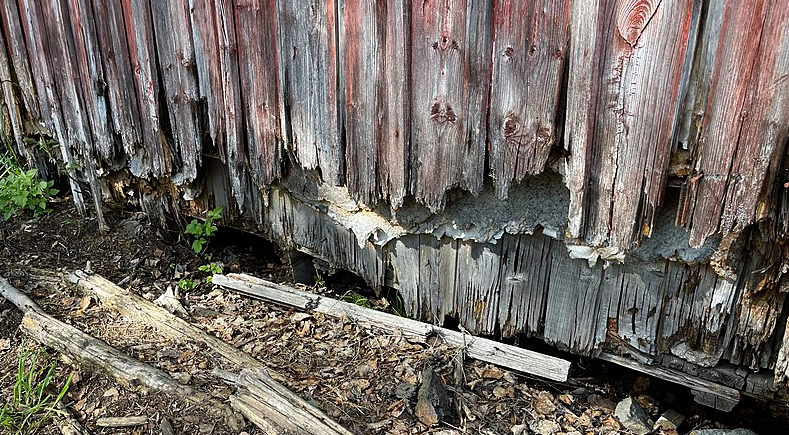
Unlike termites, which will stealthily build narrow tunnels in wooden structures, carpenter ants will simply tear through anything in their path. This often leads to much more obvious signs of damage. Wood that crumbles when you touch it is a strong indicator that carpenter ants have infested your home.
Bugs coming out of your taps
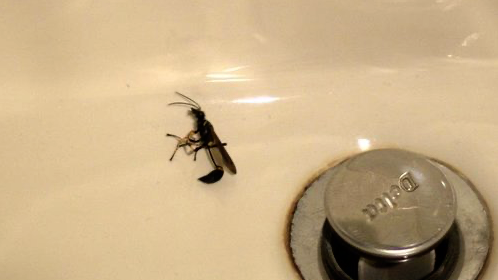
A particularly nightmarish sign that you up have a bug infestation is dead insects coming out of your taps when you turn them on. This can happen if bugs accidentally fall into your boiler or water tank, and you’re especially likely to see wasps, ants or termites.
Rustling sounds

Sounds coming from inside your walls can be indicative of a variety of insect infestations. However, ants often make a distinctive rustling sound, because they are capable of moving between your walls and wallpaper. Unfortunately, the only way to find out if the rustling is indeed caused by ants is to remove a strip of wallpaper to see if you can spot the insects.
Lots of adult fruit flies
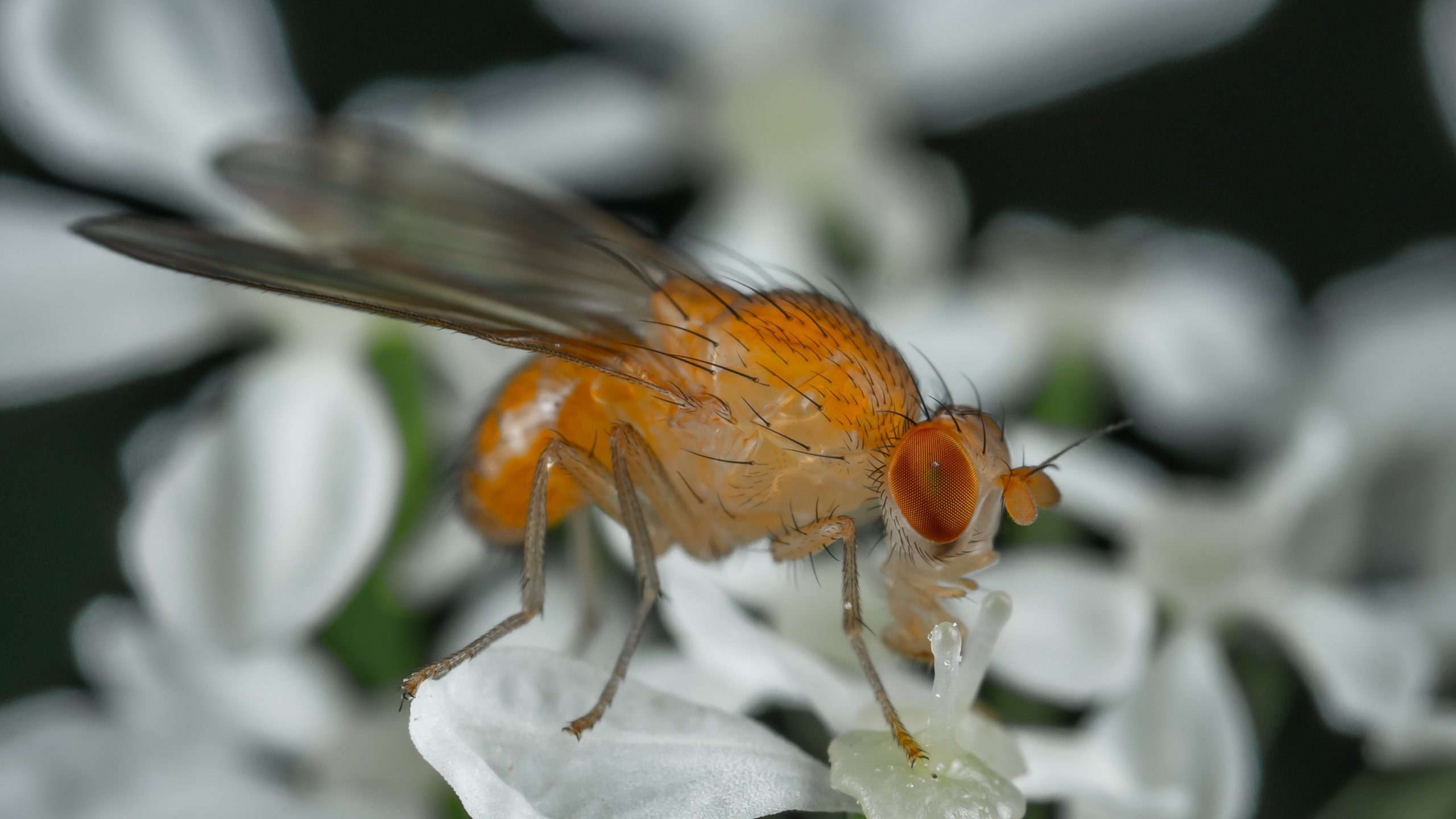
Fruit flies are tiny and they seem pretty innocuous, but their numbers can proliferate at astonishing speeds. You’re most likely to spot fruit flies hovering around bins, leftover food or empty beer bottles, and if you notice that their numbers are increasing you should throw away any old fruit that they might be using to lay their eggs.
Flying termites
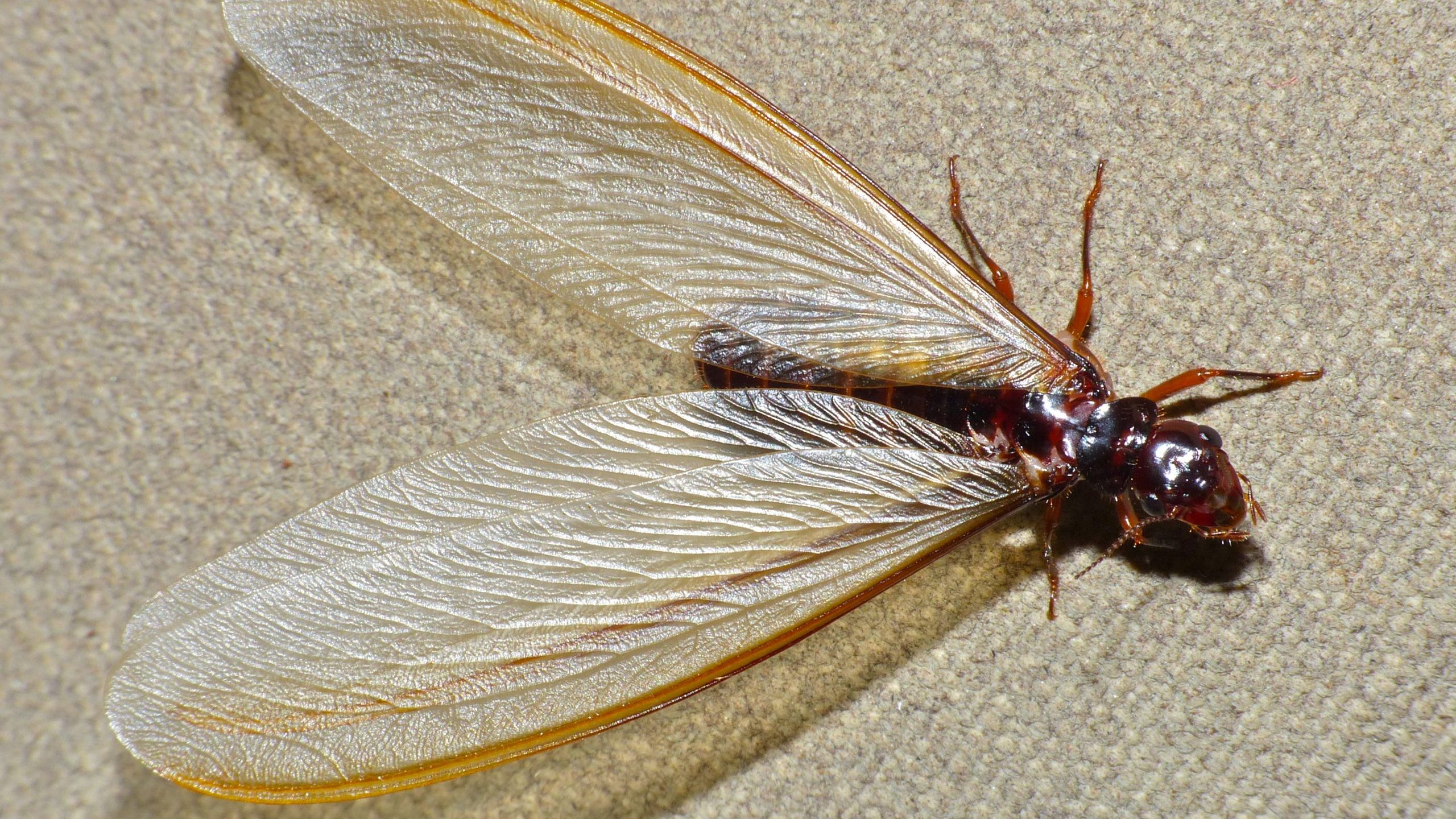
Flying termites, known as swarmers, leave their colonies to mate and establish new colonies. This only happens once the original colony is well and truly established, so if you notice clouds of swarmers flying around your property there’s a strong chance you already have a serious infestation on your hands.
Sticky honeydew on foliage
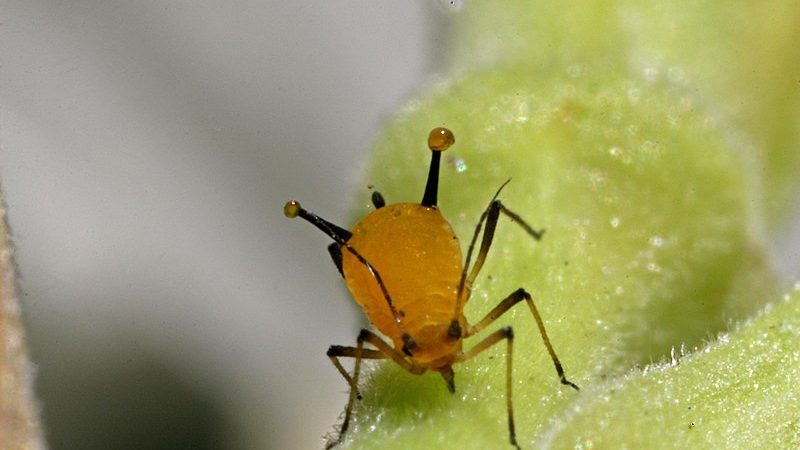
Aphids feed by injecting their long proboscis into the stems of plants and draining the sap. To aid in this process, they also inject their own saliva into the plant, which helps them digest the natural starches. After they’ve fed, the insects excrete the plant sugars which they can’t digest, which builds up on leaves as a layer of shiny, sticky honeydew.
Damage to fabrics
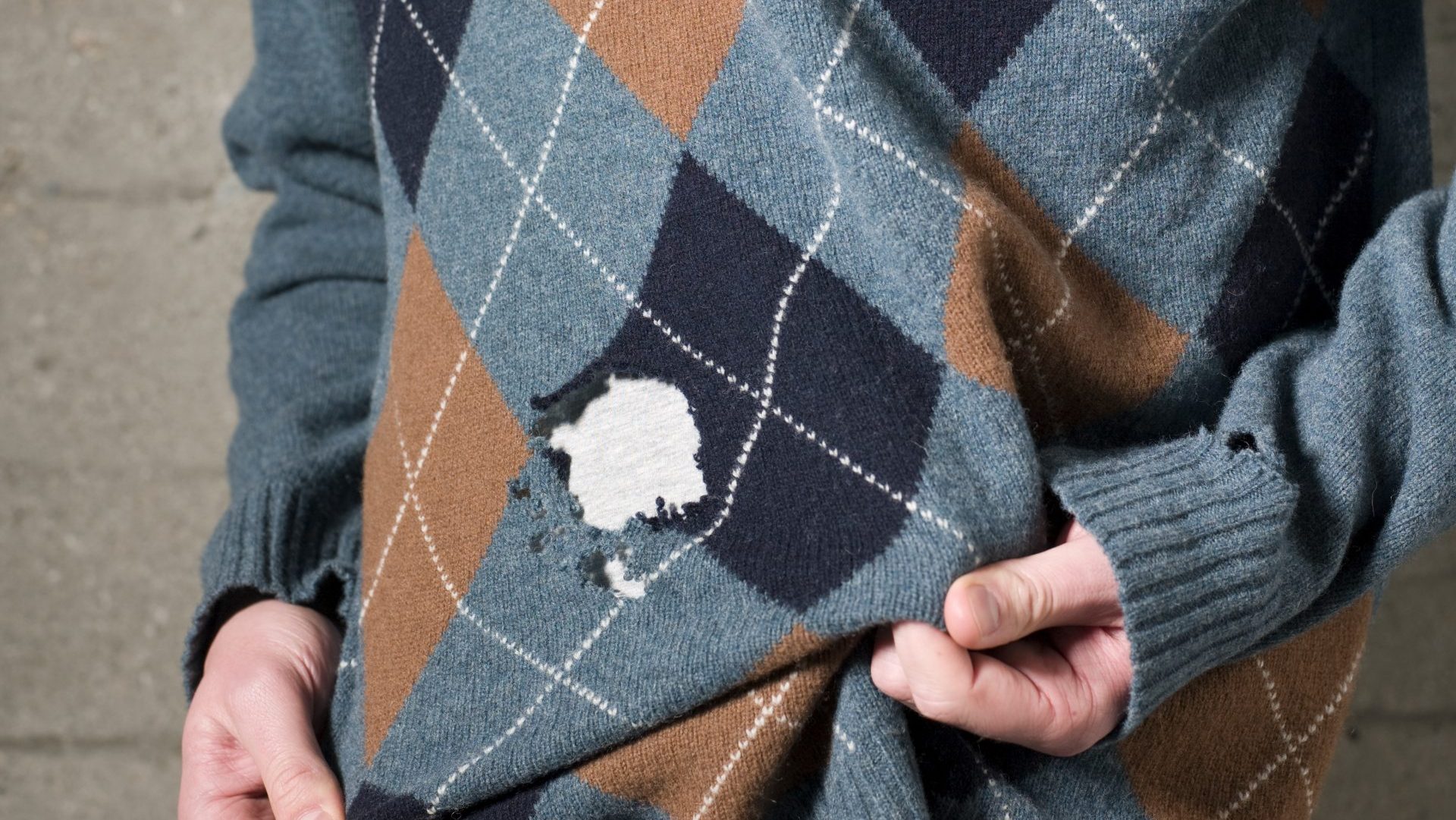
Small, fast-moving insects, silverfish survive by eating anything that contains starch. As well as carbohydrate-rich foods, they will also indiscriminately chew through fabrics and paper, often leaving visible signs of their activity. Common targets include clothes, carpets and old books, so you should periodically check these for signs of damage.
Droppings that look like pepper
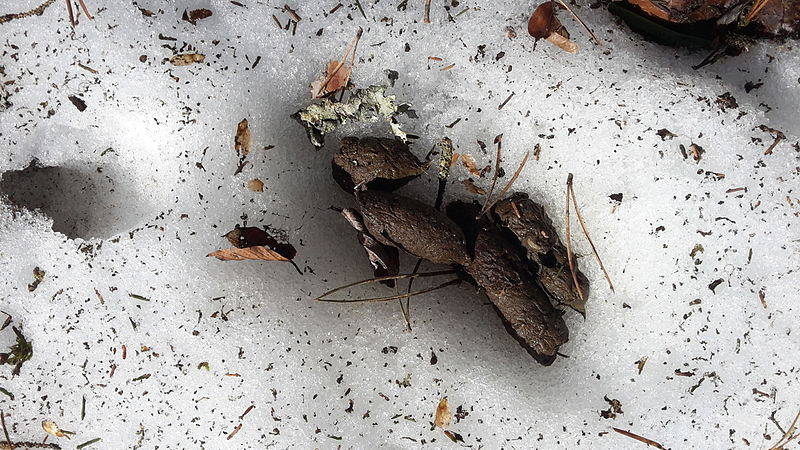
Tiny droppings are a common sign of many types of insect infestation, but silverfish faeces are quite visually distinctive. They usually resemble tiny grains of black pepper, and they are most likely to be found in cool, dark places such as cupboards, pantries and basements, all places that silverfish are naturally drawn to.
You find carpet beetles
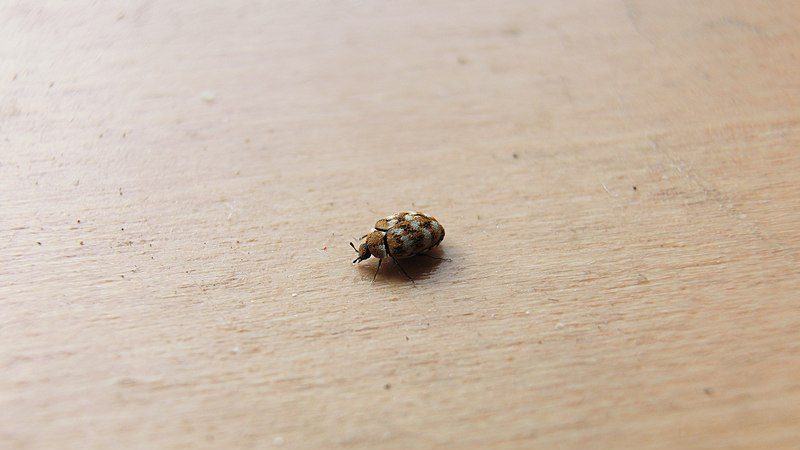
As their name suggests, carpet beetles are prone to eating through your carpets, but they won’t stop there: any kind of upholstery makes a tempting target for these rapacious little bugs. Fortunately, carpet beetles are relatively easy to spot, thanks to their distinctive shells which bear white, black and orange stripes.
Spotting bed bugs
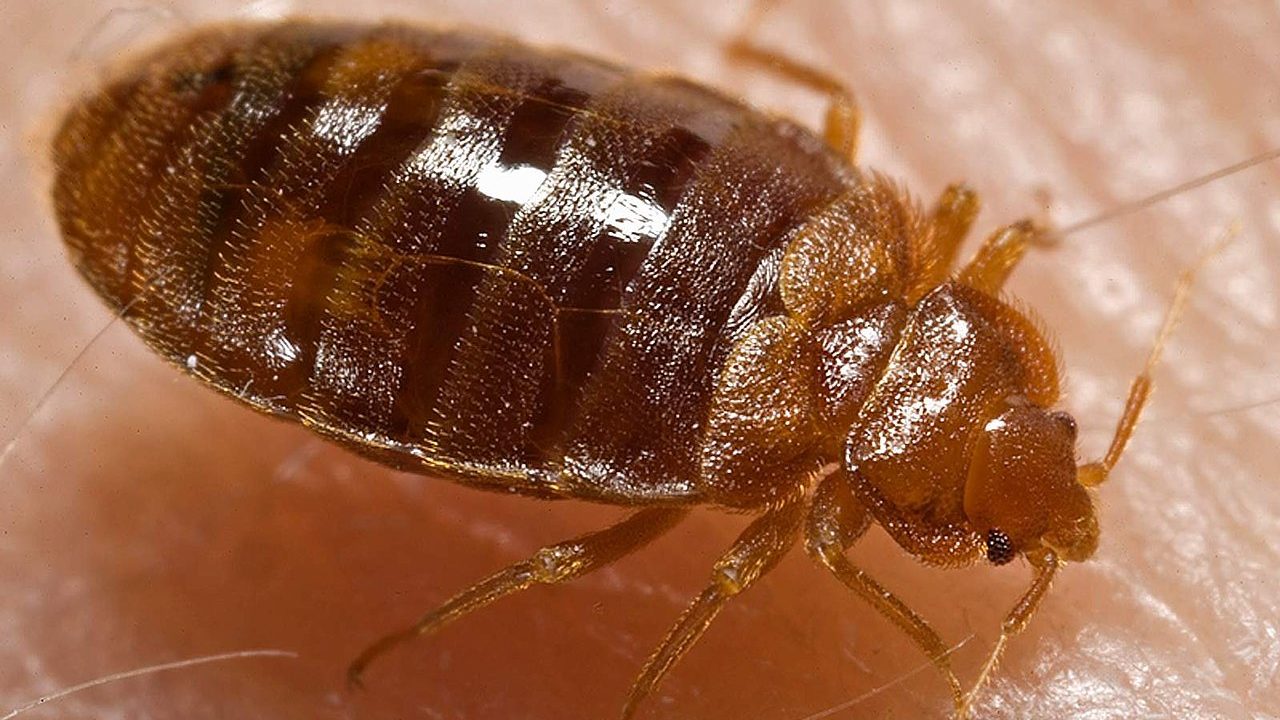
Bed bugs are small, only around four to seven millimetres in length, and they tend to hide in crevices except for brief windows when they come out to feed. It is possible to spot them from time to time, however, and if you see one you can be absolutely certain that there’s plenty more where it came from.
Finding bugs in your flour
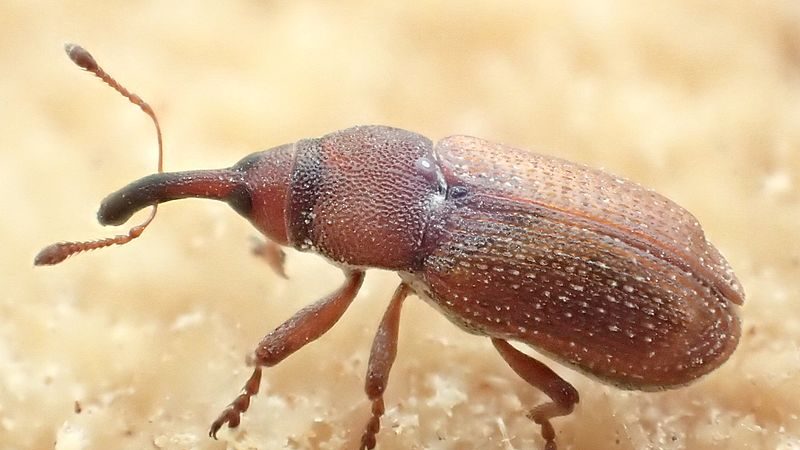
Weevils are small insects with long snouts that can often be found in food storage areas. The most common variety – known as wheat weevils – have the irritating tendency to set up shop in packets of flour. They aren’t harmful, but they’re pretty unappealing, and if you find some you’re best off just throwing your flour and buying a new packet.
Changes to the appearance of wooden flooring
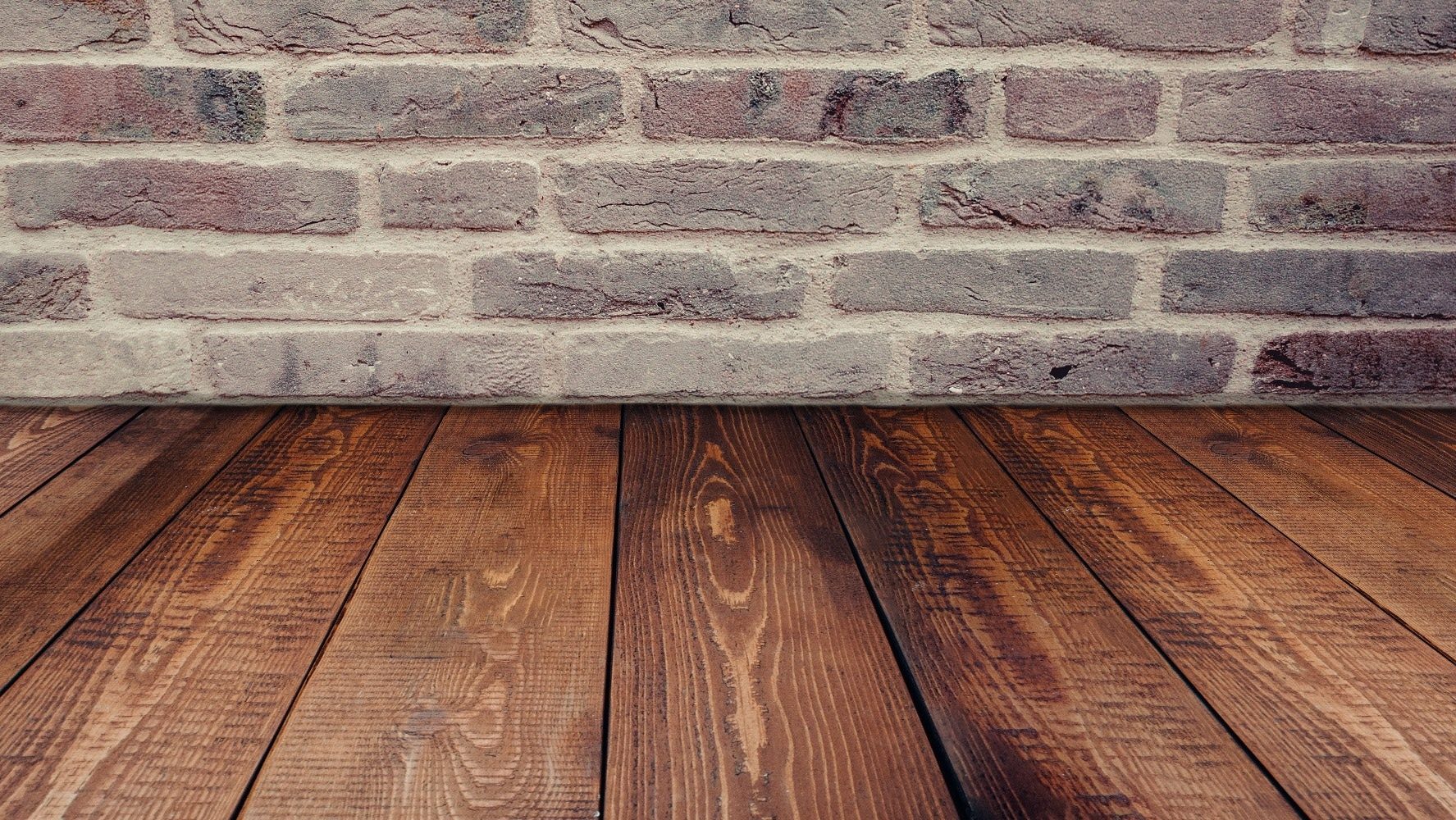
There are various subspecies of termite, all with different preferences when it comes to types of wood. Subterranean termites, for example, can borrow under your house and feed on your subfloor. Visual signs usually won’t appear until significant damage has been done, but when they do they will include patches of discolouration and the appearance of strange, wavy patterns.
Puncture marks on fruit

True to their name, fruit flies reproduce by making small holes in fruit and laying their eggs inside. It you notice your fruit has tiny puncture marks in it that ooze a sugary substance, throw it away before the eggs hatch and you find yourself dealing with a full blown fruit fly infestation.
An itchy scalp
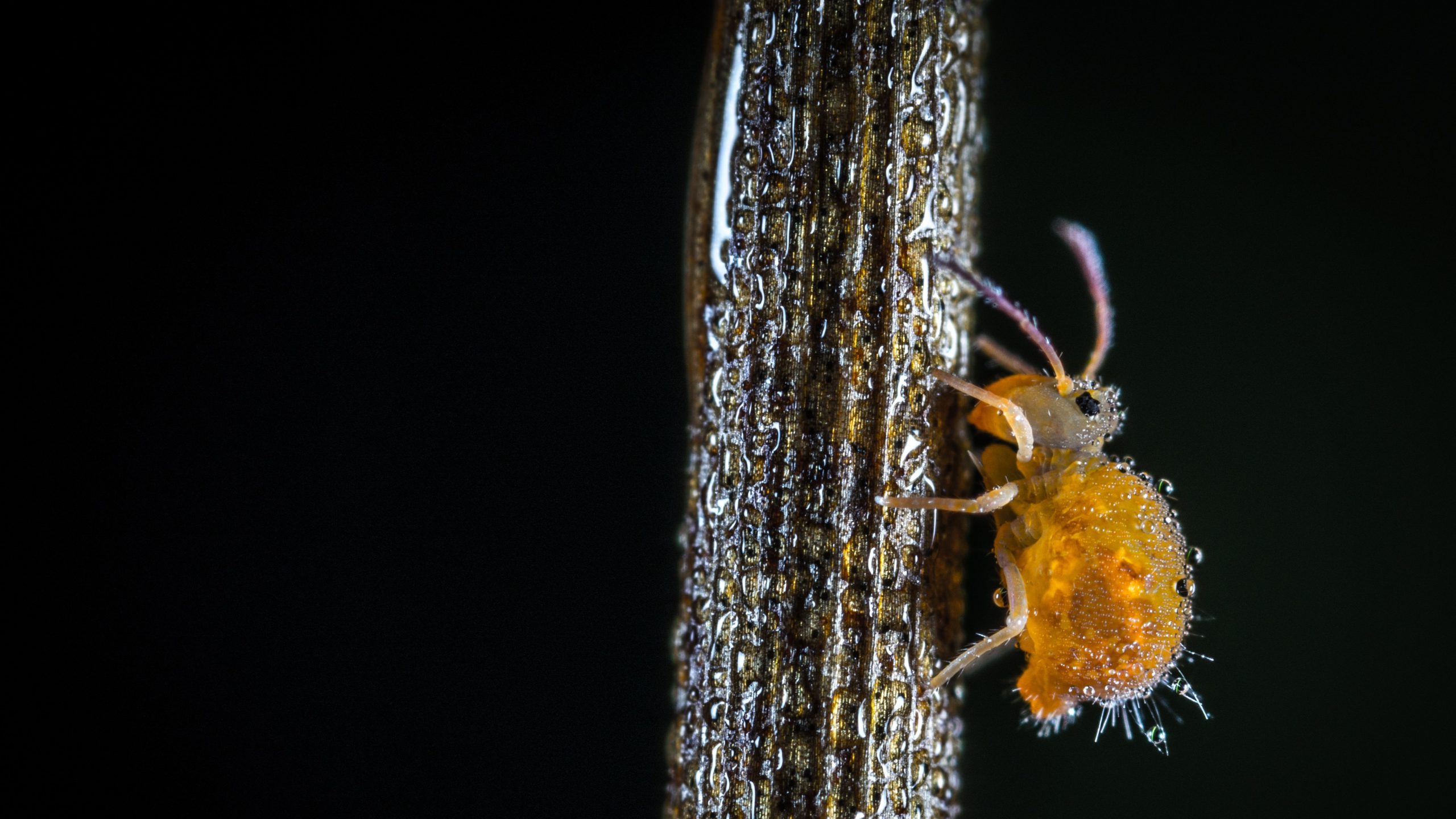
Lice infestations are dreaded by parents, for good reason. The blood-sucking insects spread via close contact, with most outbreaks starting at schools. The main sign that you have lice is an intensely itchy scalp, and a close visual inspection will then usually reveal the tiny, wingless parasites clinging to strands of hair.
White flakes around plants
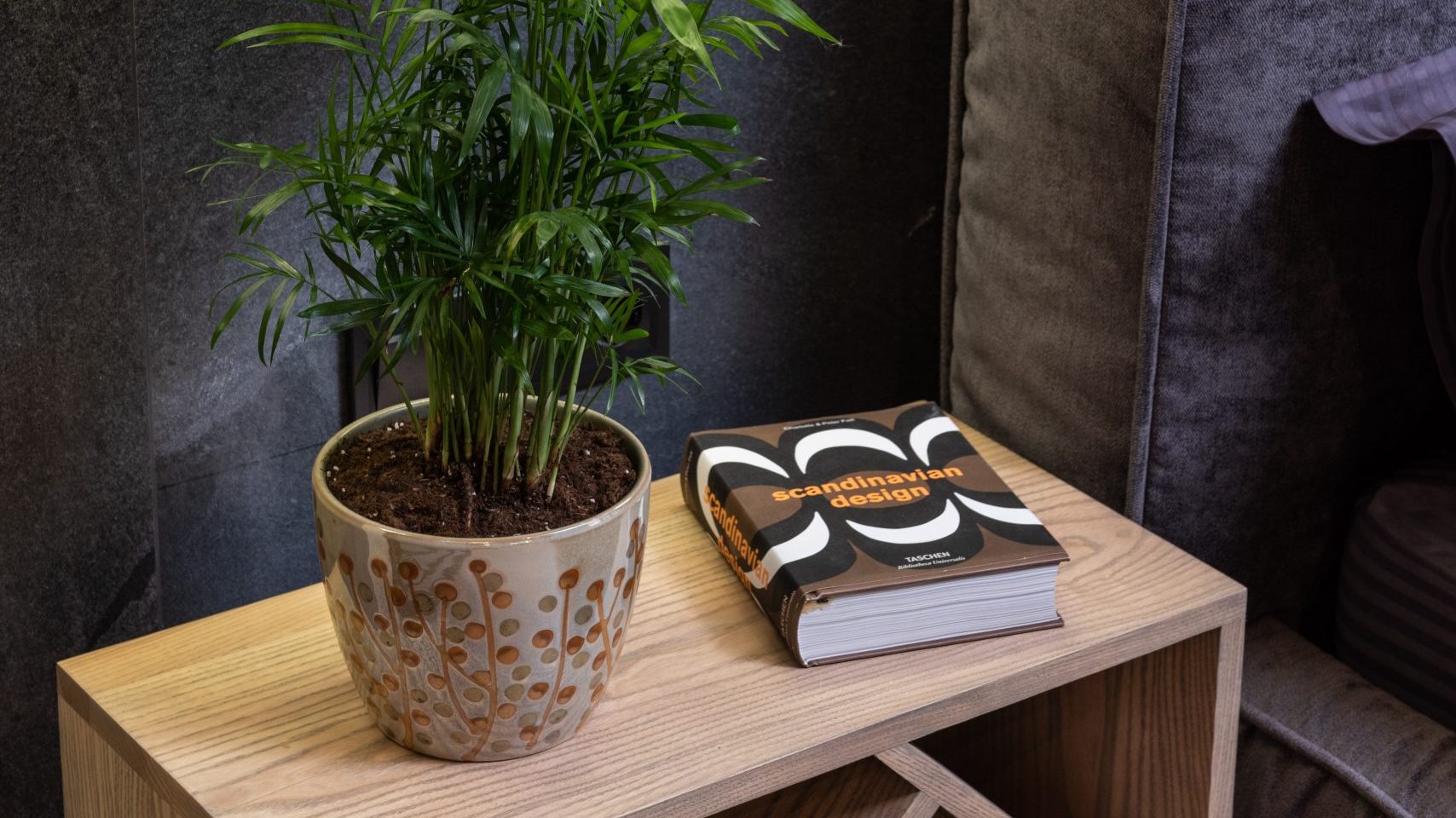
Female aphids lay their eggs on the plants they live and feed on, and the nymphs that hatch go through four stages of development. With each new stage, the nymphs grow larger and shed off their skin, which can accumulate around plants in piles of small, white flakes.
Large holes in wood
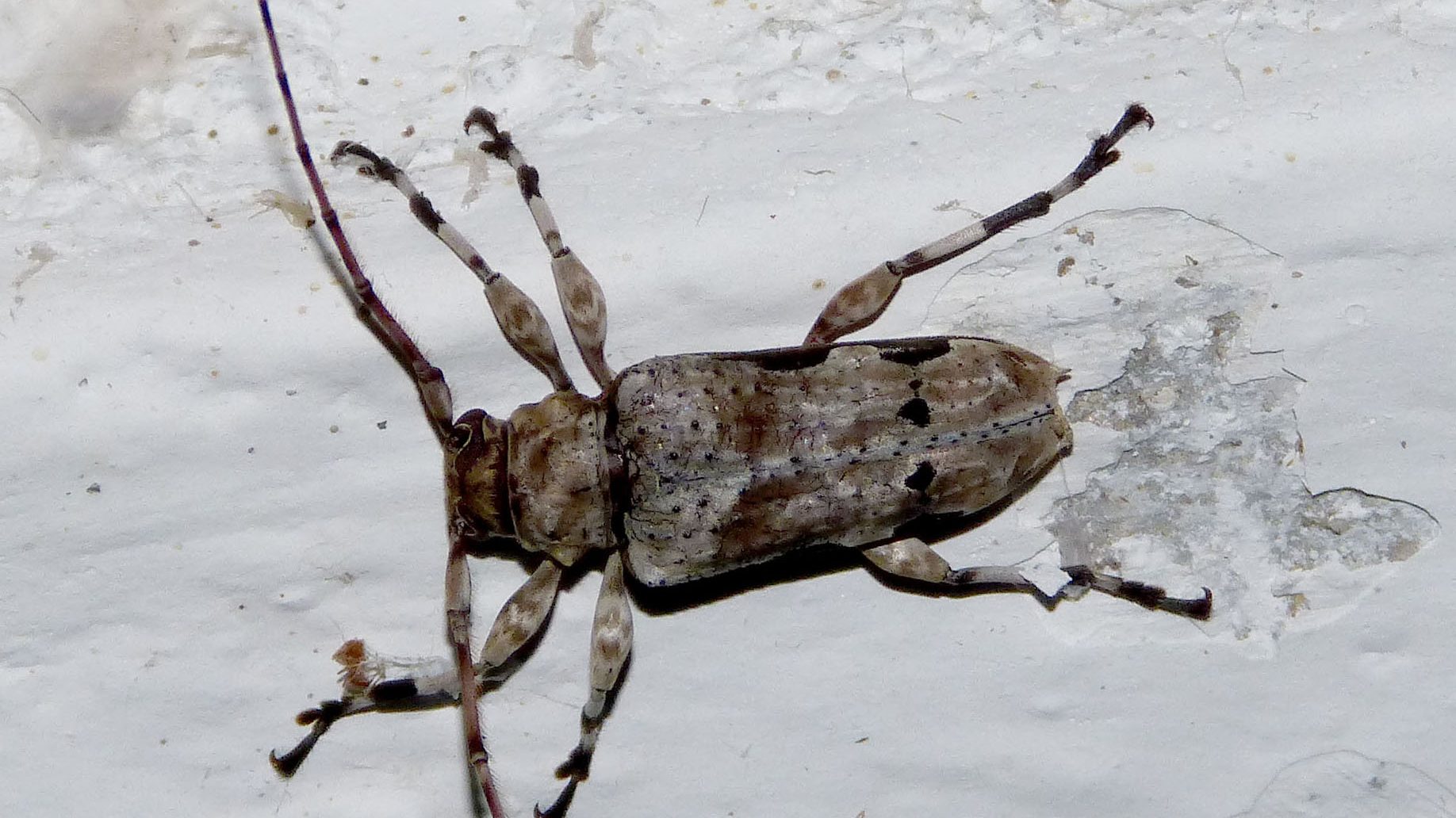
The most common wood-eating insects are termites and carpenter ants, but they are far from the only bugs capable of ruining your furniture. Longhorn beetles are relatively rare, but they can inflict serious damage in short amounts of time, boring holes in wood that are noticeably larger than those left by termites or ants.
Holes in leather

As well as destroying carpets and other fabrics, carpet bugs will also happily chew through leather. Since leather isn’t palatable to most species of insect, if you’re finding telltale holes in leather upholstery or clothing you can be fairly certain that a carpet bug infestation is to blame.
Discoloured paper

Firebrats are closely related to silverfish, and they tend to live in the dark, cool parts of your house. The insects love to eat paper, but because their mandibles are so weak they tend to use them to scrape, rather than chew, resulting in patches of discolouration on old books and magazines.
Sooty moulds growing on plants

Much like aphids, scale insects survive by draining the sap from plants, with any undigested sugars excreted as honeydew onto the surface of leaves. Because it remains perpetually damp, this honeydew can quickly lead to the development of sooty moulds, which look like a thin layer of dark ash.
Dips in your ceiling
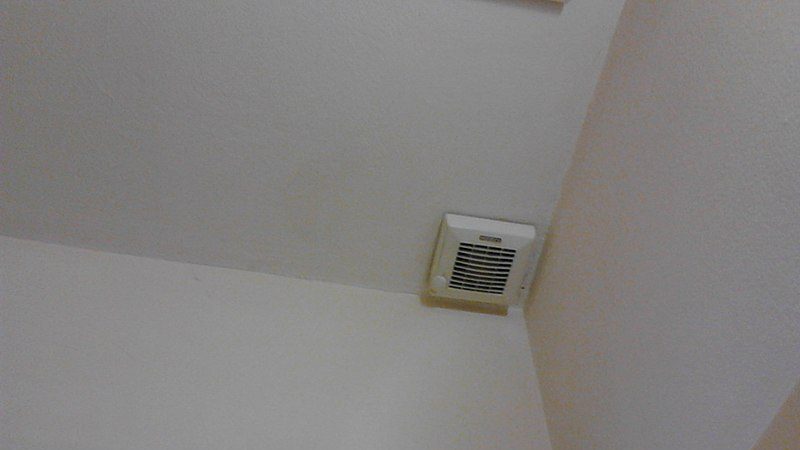
Left unchecked for extended periods of time, termites can inflict serious structural damage on your home. Sagging patches in your ceilings can be a sign that termites have got into your support beams. This needs to be addressed urgently before the insects cause irreparable damage to your house.